On a warm summer's day not much beats a walk through beautiful British countryside followed by a refreshing drink and well-earned meal at a country pub.
Later in the year, as autumn sweeps across the British countryside, our woods, moors and mountains transform. The vibrant greens of summer begin to mellow; the trees flush a hundred shades of orange, red, gold and yellow, and the hillsides bronze with fading bracken and heather.
Autumn is one of the best times of year to be out walking in the British countryside. It's also a wonderful season for dropping into a cosy, country pub, somewhere to rest weary feet, to refuel your body, and to warm up by a toasty fire. So, why not combine the two for the perfect autumn day out?
What could be better than a day of winter hiking in the hills or a riverside walk followed by food and drink in a cosy country pub? By winter, Christmas lights twinkle in the windows of many rural pubs, and the smell of mulled wine and cider fills Britain's traditional pubs with festive cheer.Settle down with a beer by the fire, tell tales of adventures had and those to come, and fill hungry bellies with hearty food.
From Cumbrian classics in the heart of the Lake District and Scotland's famous Highland inns, to Welsh watering holes amid hills and mountains, we've put together a list of some of the UK's best pub walks, each starting, ending or midway along a suggested walking route.
Best pubs in England
The Rockford Inn, Exmoor
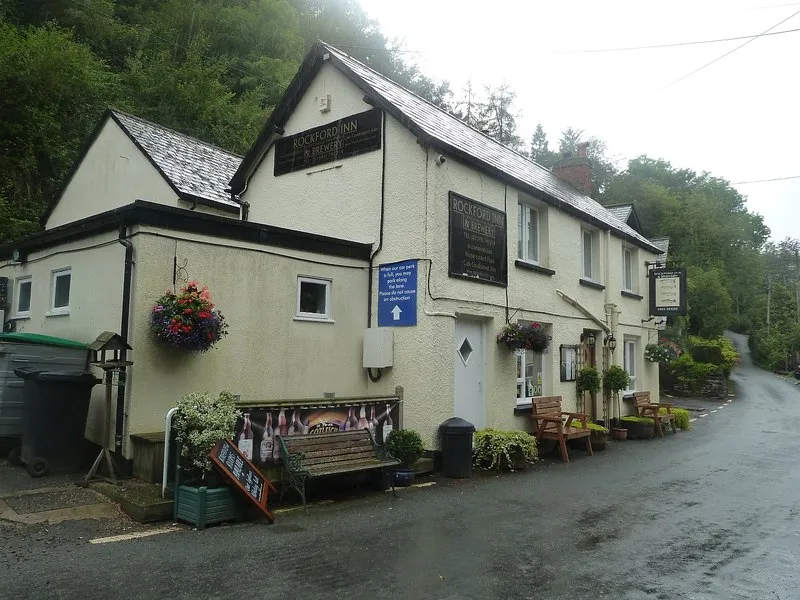
Tucked away in an ancient woodland deep in the Exmoor valley, this 17th century pub is the perfect spot for a hearty lunch and a pint of local ale after a leisurely walk along the East Lyn river. Inside you’ll find a roaring fire, friendly service and a treasure trove of interesting historical artefacts from the local area. therockfordinn.co.uk
Pig’s Nose Inn, Devon
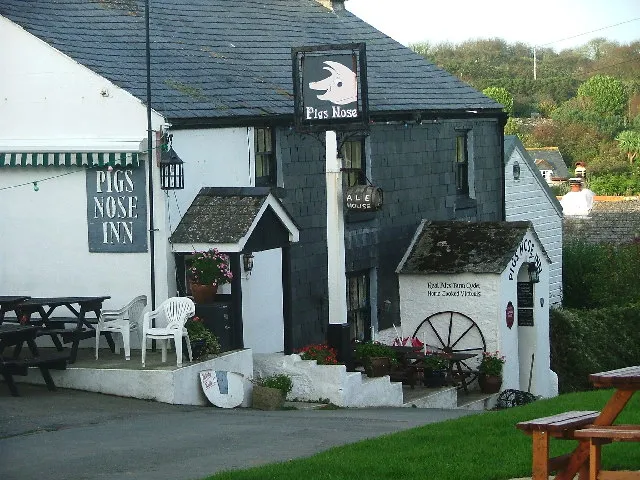
The Pig’s Nose Inn in East Prawle. Set on the most southerly point of the magnificent Devon coast, this characterful 16th-century pub is always packed, full of cheerful eccentrics, glinting bars fittings, warm lamps and bonhomie. Something about its atmosphere evokes its pirating past. The classic pub grub is home cooked and hearty, just as it ought to be after a long walk in blustery winds, and the pub also has a live music venue for swashbuckling singalongs. Plus real ales straight from the cask. pigsnoseinn.co.uk
The Old Dungeon Ghyll, Langdale, Cumbria
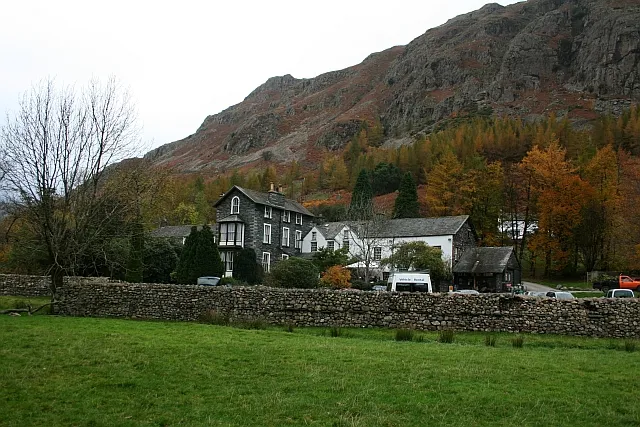
The fun atmosphere of this pub is sure to warm you up after a chilly day in Ambleside. The Hikers Bar has long been the haunt of exhausted fell walkers and climbers - in the 1880s, it was known as the Middlefell Inn and the landlord was a well known guide for tourists, and later the pub became a popular haunt for Everest climbers such as Sir John Hunt. Now, it serves good beer, a range of scotch whisky’s, and wholesome, healthy food, and also holds live music nights.
The Hare Arms, Stow Bardolph, Norfolk
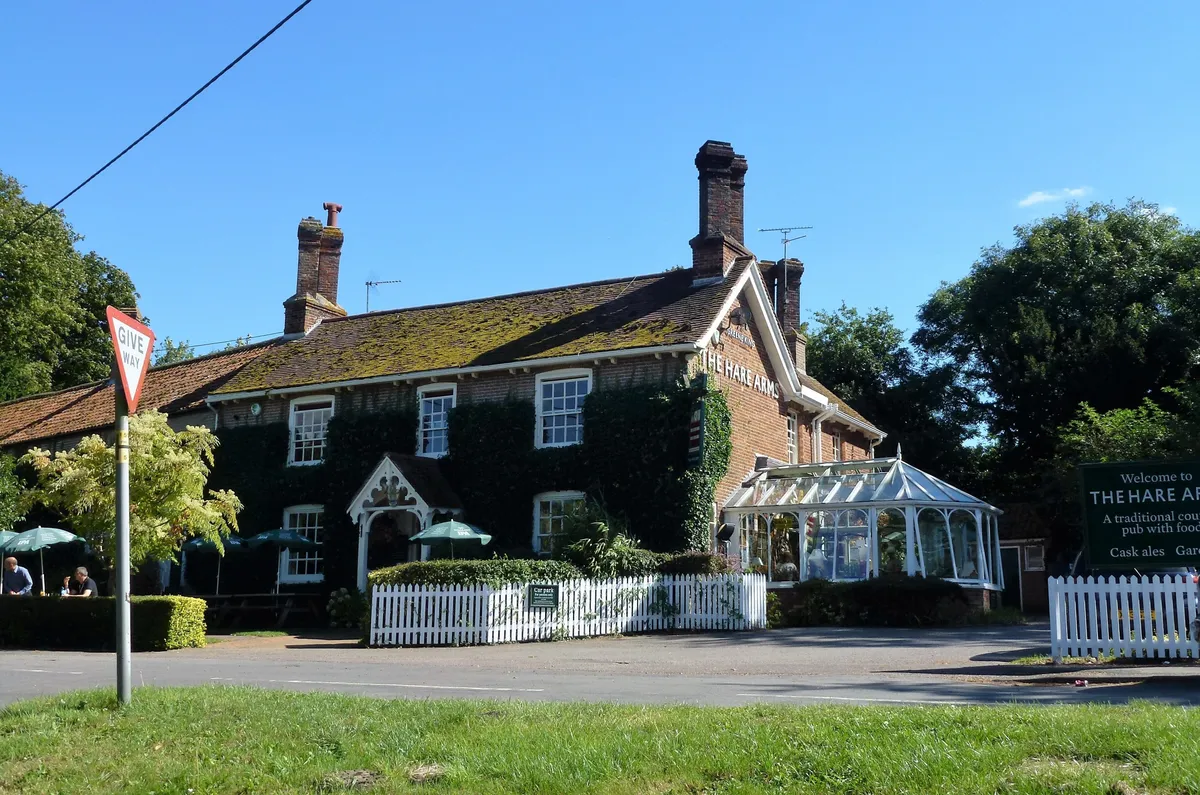
This recently refurbished pub in the centre of West Norfolk not far from King's Lynn offers a fresh menu with a selection of cask ales. The original pub building was built during the Napoleonic wars, and it was transformed into an inn when Captain Thomas Hare offered it to three soldiers. After becoming an inn, the Hare Arms became the heart of local celebrations for wartime victories, coronations and jubilees. Today, you can call in after a day on the coast for a hearty meal.
Queen's Arms pub and Hotel, Hawkshead, Cumbria
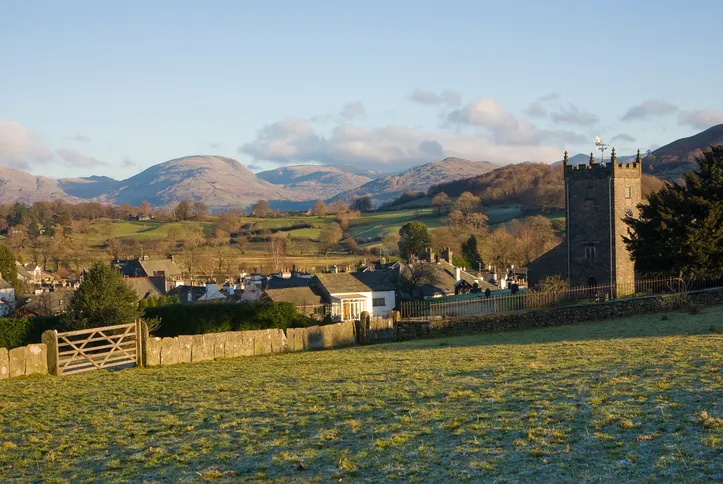
The Queen's Arms pub has been offering refuge for winter walkers since the 17th century. Hawkeshead itself was once home to William Wordsworth and Beatrix Potter, and is closed to traffic, making it the perfect quiet place to explore after a long day of walking. The hotel and pub, with guest rooms, food and an open fire, is the perfect base for exploring the southern Lakes.
Wasdale Head Inn, Wasdale, Cumbria
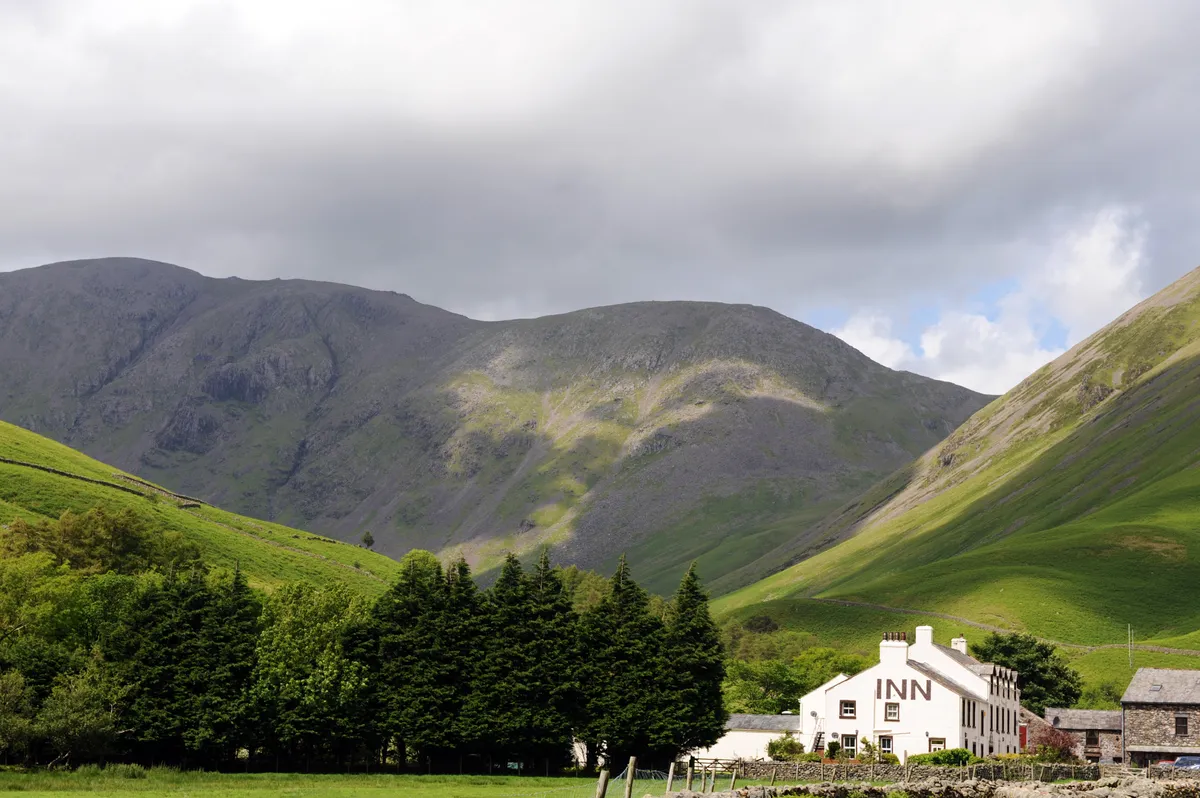
Buried in the far reaches of one of the most remote valleys in Britain stands the warm and welcoming Wasdale Head Inn. Found nestled at the very end of the valley whose name it bears, this stunning little Lakeland outpost is well worth the pilgrimage.
The walks in the area encompass everything that a Lakeland explorer could hope to find but should be treated with the utmost respect in the icy months. A relatively straightforward but still glorious excursion can be had by climbing north-east to the waters of Styhead Tarn.
What makes the perfect country pub?
The atmosphere
Like Christmas, a country pub has to be just so – cosy, traditional and without modern accoutrements. Older is even better. Horse-brasses and agricultural implements of old are important. Sepia prints, along with the occasional stuffed and mounted fish (if neara lake or river, or caught by a local) also offer talking points. Big oak beams certainly help.
Setting
A view is great, a beer garden essential, a lack of traffic a necessity. A pub on a village green is nirvana. A riverside where you can watch water flow and others struggling with their craft is equally joyous.
Good selection of drinks
A range of local ales, ciders and lagers on tap has to be the bare minimum requirement.
Hearty, locally sourced food
This has to be made on the premises. Simple, fresh and tasty works best. Be wary of enormous lists – the wider the variety, the more likely meals will be cooked from frozen. A briefer menu probably means you’re in for a treat.
Friendly service
Country pubs can be busy, so the bar person needs to be aware of who is next to be served and tell them while serving the previous customer by using eye contact. This removes all stress from the bar.
Muddy footwear is allowed
You’ve walked for miles to a remote pub only to be confronted with a terse sign. You should always remove muddy boots but such signs can mean there will be other fussy rules once you’re inside.
A roaring fire
An open log fire marginally beats a wood burner but this is arguable. A fireplace offers focus – even in summer when it’s not burning.
Lion Inn, Blakey Ridge, North Yorkshire
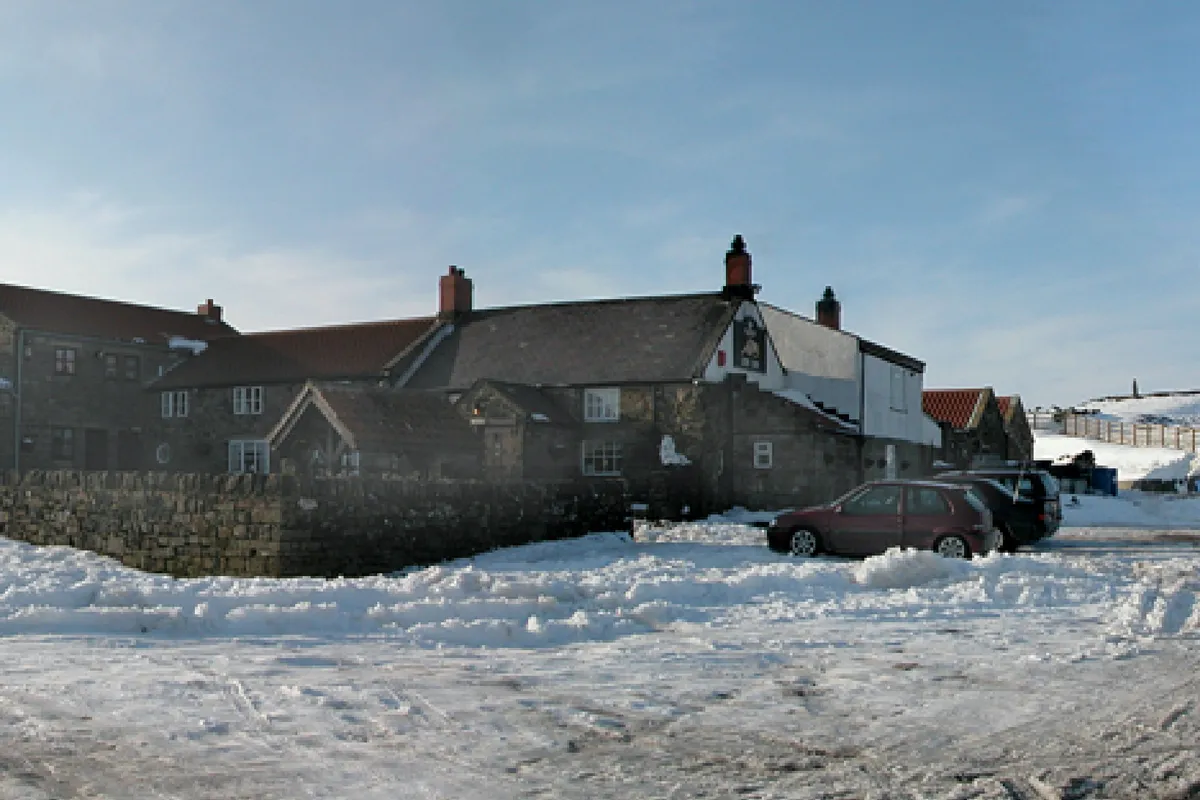
Located on the highest point of the North York Moors National Park, this rural inn is a fitting refuge for a winter pint. The 16th-century Lion Inn stands at an elevation of 1,325 feet and looks over Rosedale and Farndale, and ancient fireplaces burn all day. The pub offers hearty, traditional pub grub and has 13 rooms if you decide to stay.
Plume of Feathers, Rickford, Somerset
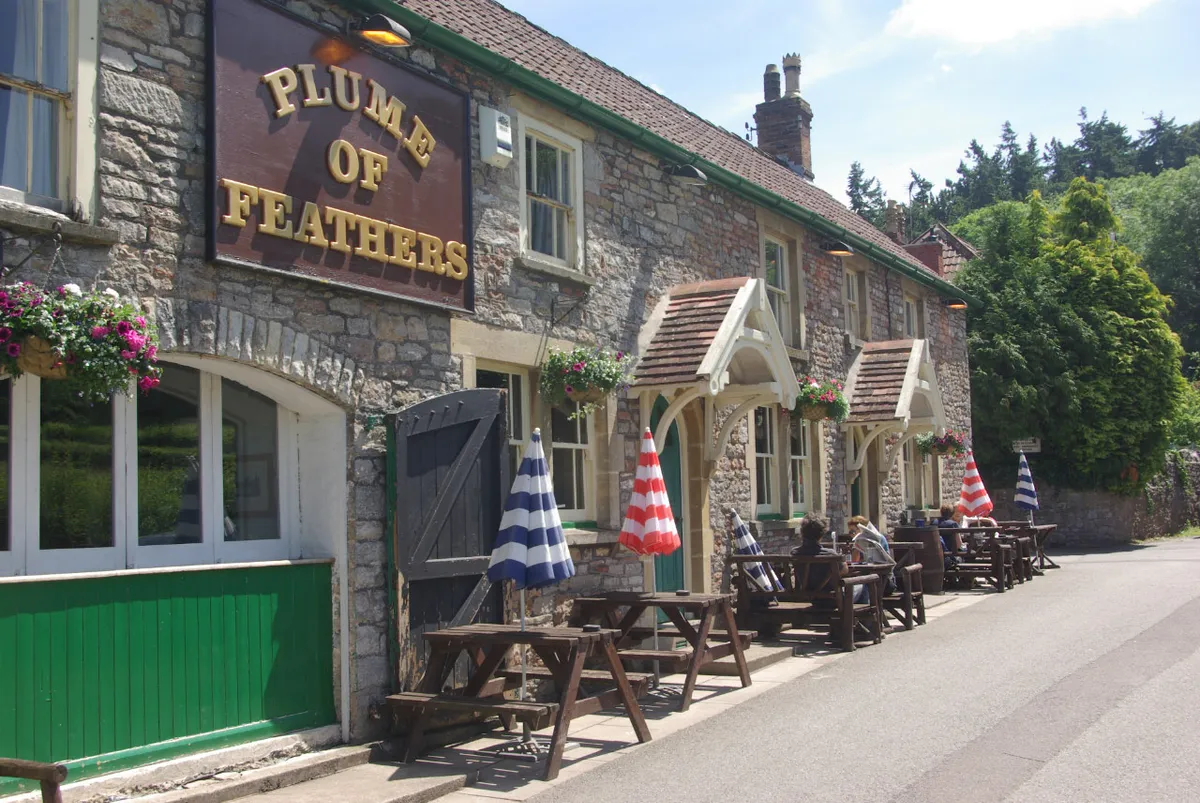
Set in a hamlet by a stream at foot of the Mendips, this traditional English pub serves local ciders and beers, and simple, appetizing food. Inside there are flagstone floors, whitewashed walls and open fires; or head for what may be England’s steepest pub garden, overlooking orchards and the North Somerset Levels. theplumeoffeathers.com
The Tors Inn, Belstone, Dartmoor
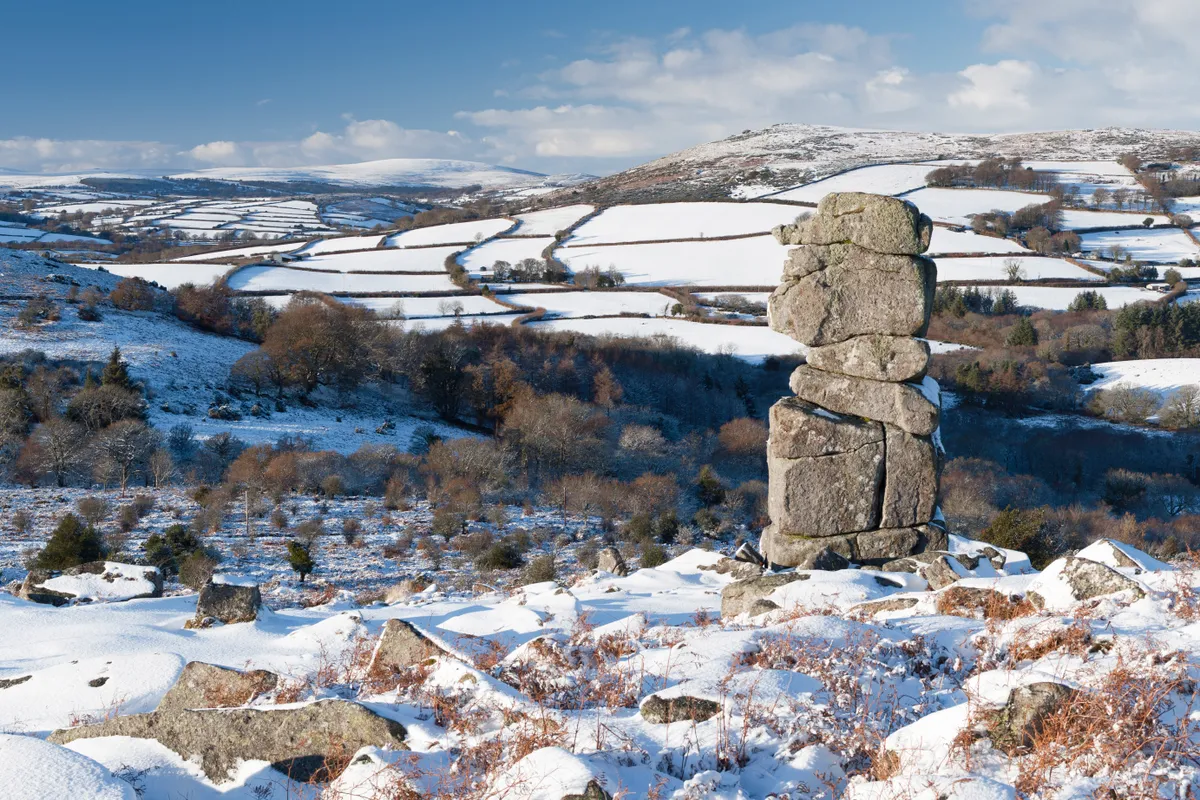
One of few remaining old fashioned village pubs, The Tors is central to the best walking to be found on Dartmoor. A CAMRA pub, it serves many locally brewed ales and a mighty whisky selection, and is surrounded by some of the most dramatic open moorland in Britain.
The Old Nags Head, Edale, Derbyshire
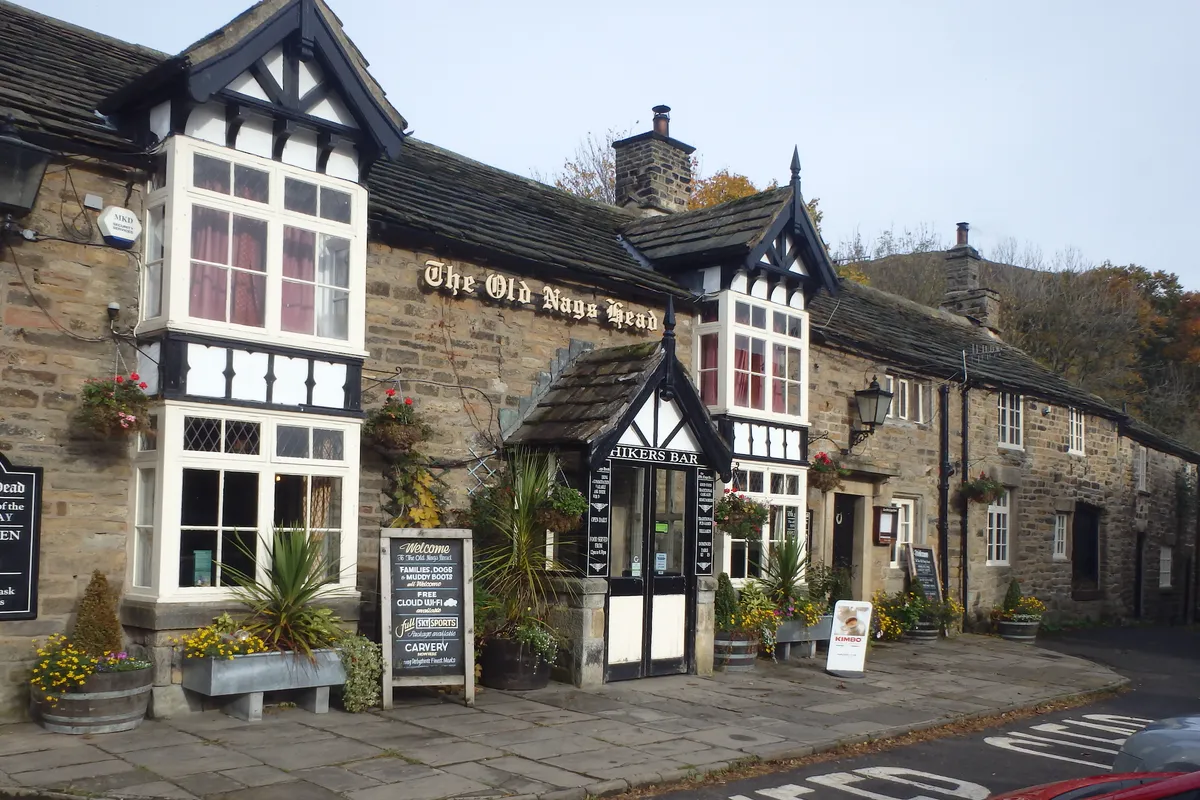
Built in 1577, the Old Nags Head sits at the start of the challenging Pennine Way, and there is plenty of great walking to be found in and around the area. The fires burn throughout winter, and to accompany the generously sized meals their rich and malty ‘1557’ ale is a winner.
The Royal Oak, Cardington, Church Stretton, Shropshire
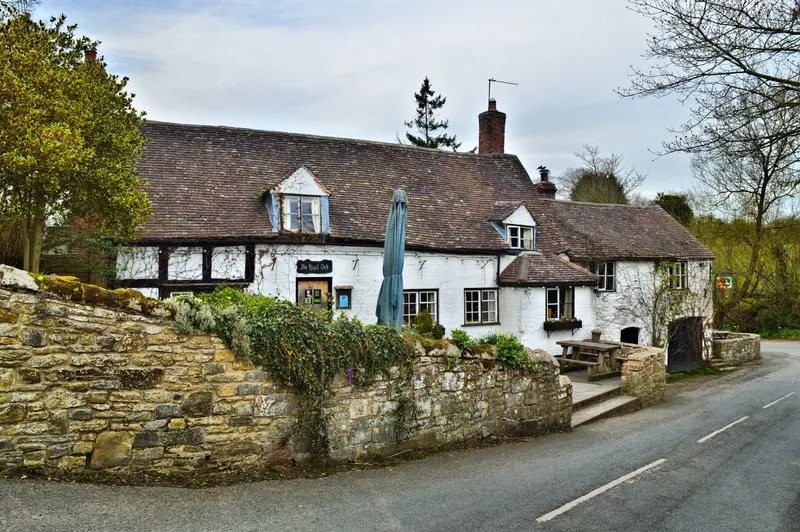
Deep in the South Shropshire Hills, this gem is one of the oldest pubs in Shropshire to have been continually licensed. Offering fine real ales and local fare such as the famous ‘Fidget Pie’ of gammon and apples, the inglenook fireplace is a welcoming treat after a brisk country walk.
The Twice Brewed Inn, Northumberland
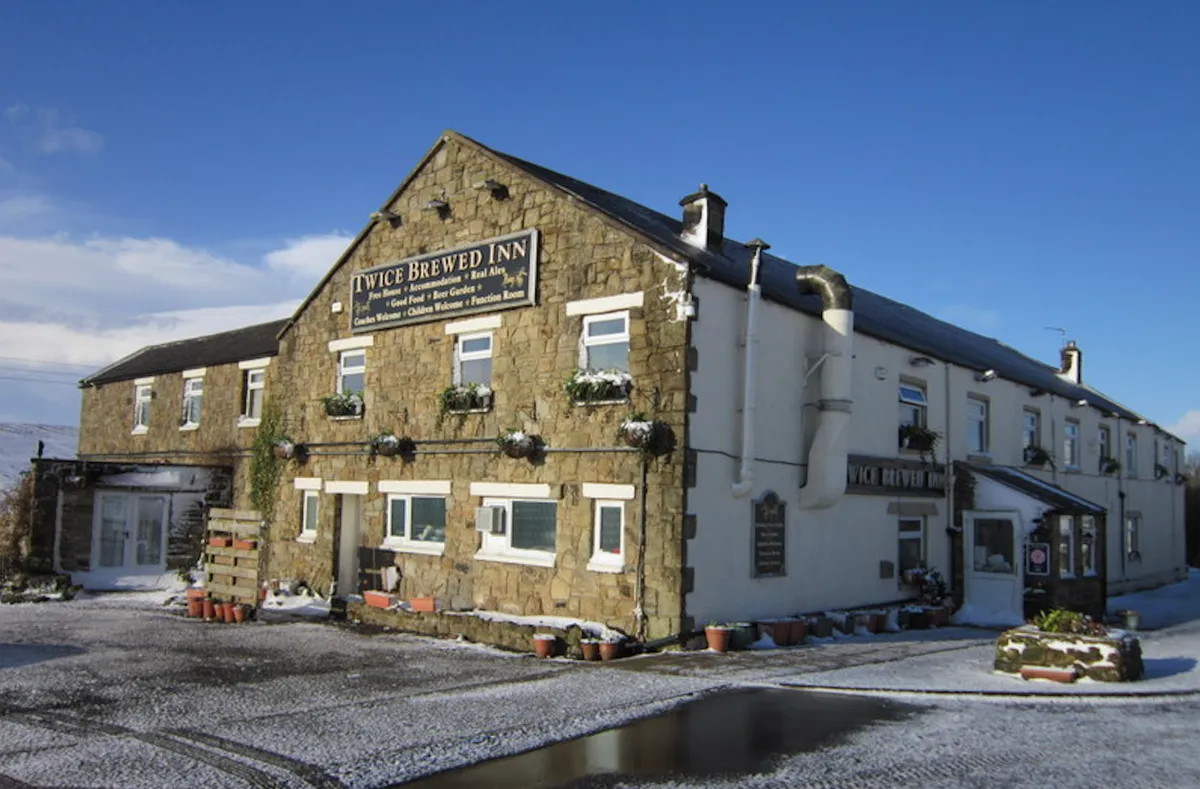
Square and Compass, Dorset
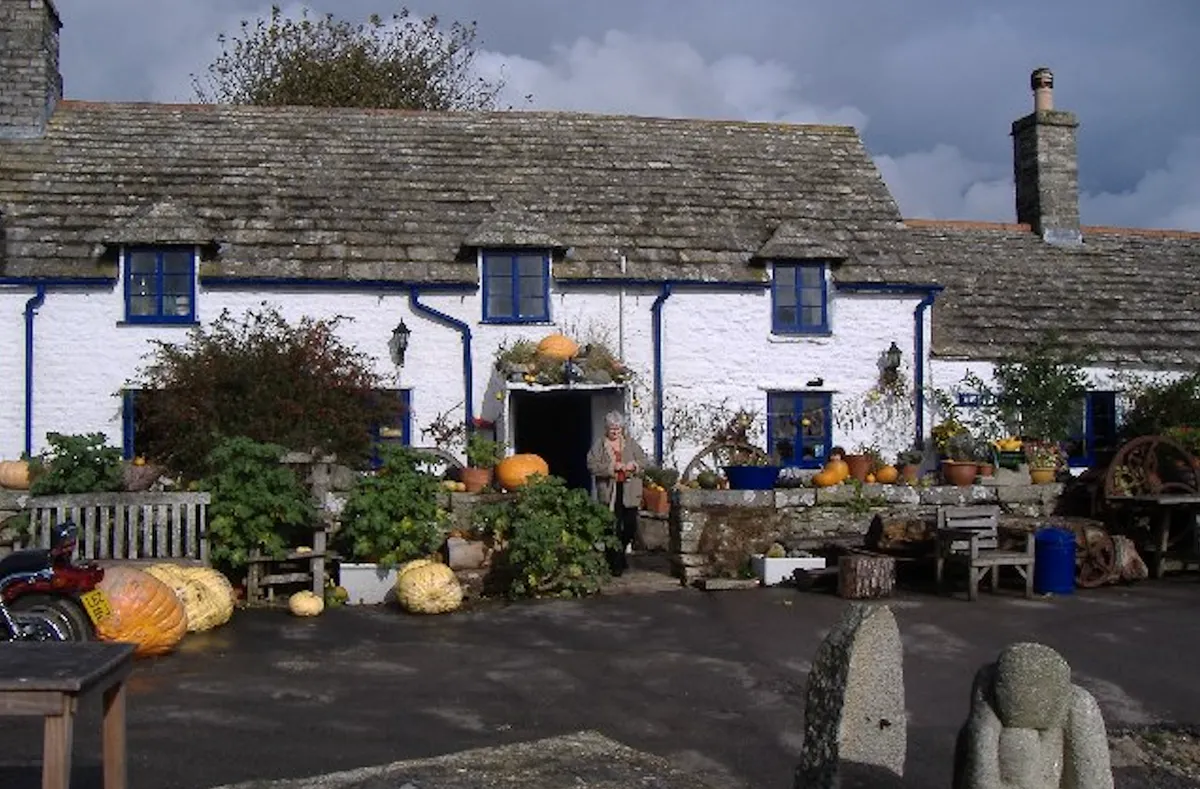
When the festivals are over and only the hardiest hikers tread the frozen turf of the South West Coast Path, there’s nowhere more inviting to hunker down than the Square and Compass. Set on a hill in Worth Matravers, with views of the English Channel, this is a great way to while away a lazy Sunday afternoon.
Smugglers Inn, Osmington Mills, Dorset

The George Inn, Lacock, Wiltshire
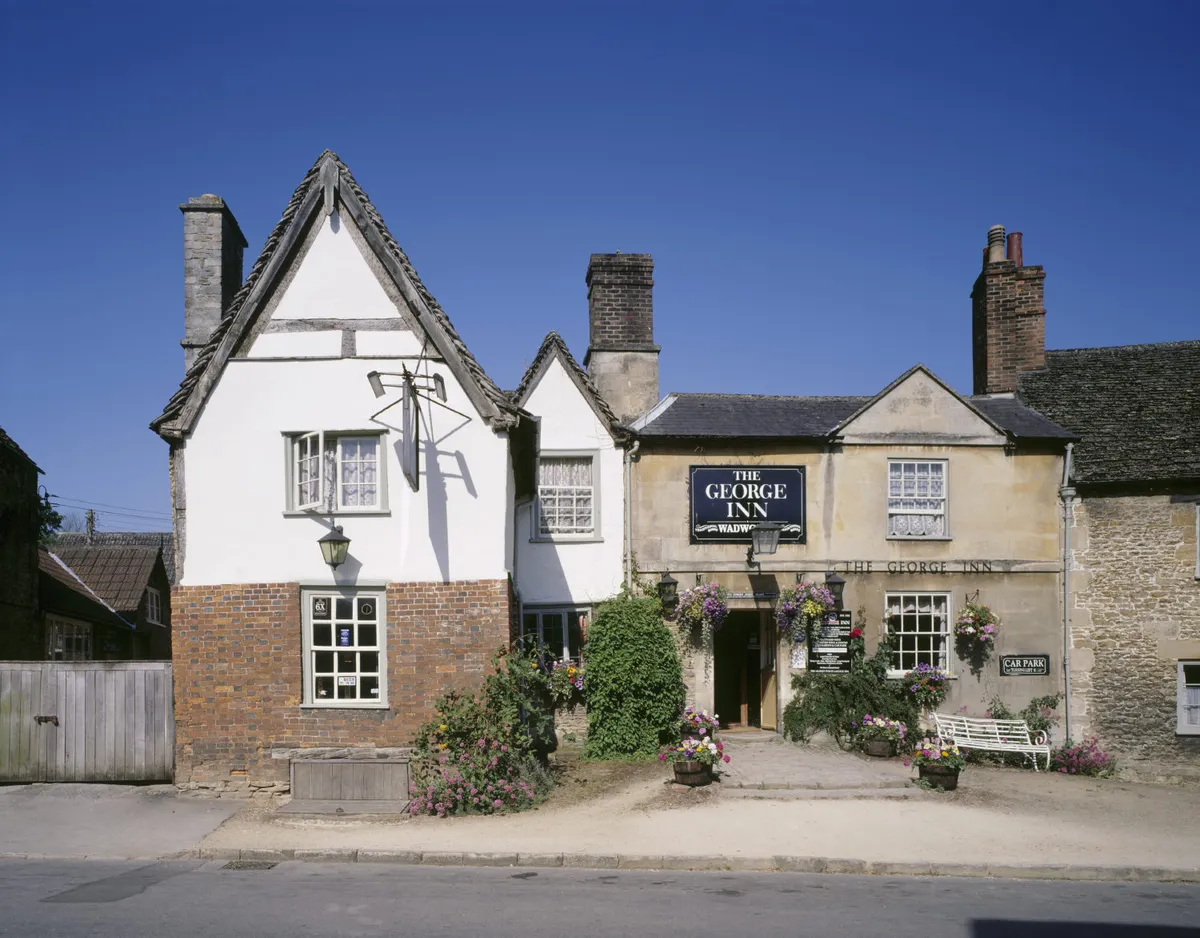
Dating back to 1361 and featuring a huge open fireplace, the George Inn encapsulates the spirit of old England. The National Trust looks after much of the historic village of Lacock, and there is a plenty explore on foot from the grounds of Lacock Abbey to village and riverside walks. After all that walking you’ll deserve a trip to Lacock’s second pub – the Red Lion.
Burnham Beeches, Buckinghamshire
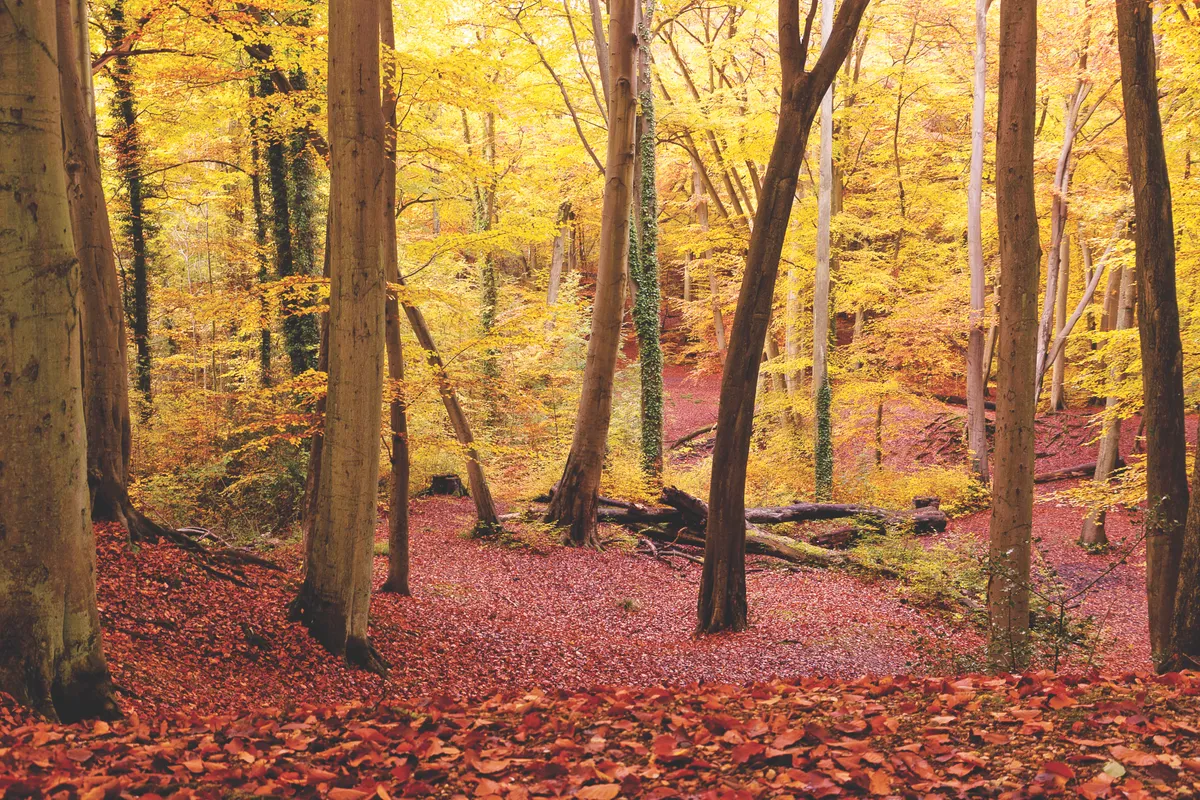
Take a walk through the historic Burnham Beeches National Nature Reserve – one of the best examples of ancient woodland in Britain.
The forest is best explored in the autumn months with a midway lunch stop at a traditional country pub – pick from the Blackwood Arms or the The Jolly Woodman.
Grizedale Forest, Cumbria
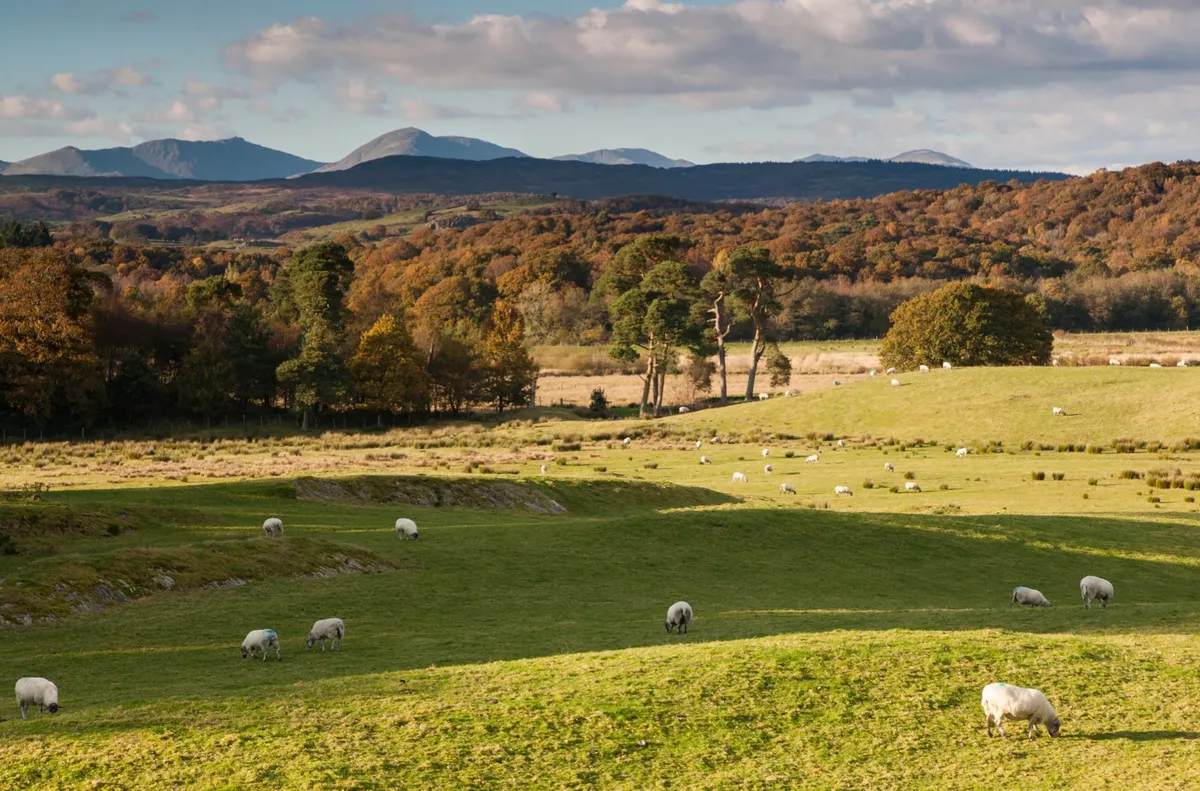
Rippling across the crags between Windermere and Coniston in the Lake District National Park, Grizedale Forest is 8,000 acres of mixed woodland laced with tracks and endowed with a renowned series of outdoor sculptures. Inaugurated in 1977, the sculptures dot the forest as unexpected, thought-provoking, inspiring creations, made by artists “in response to the landscape”.
Find these magical sculptures among the trees on this eight-walk through the hilly Lake District forest. The Eagles Head offers hungry walkers a chance to refuel before continuing on the trail.
Church Stretton, Shropshire
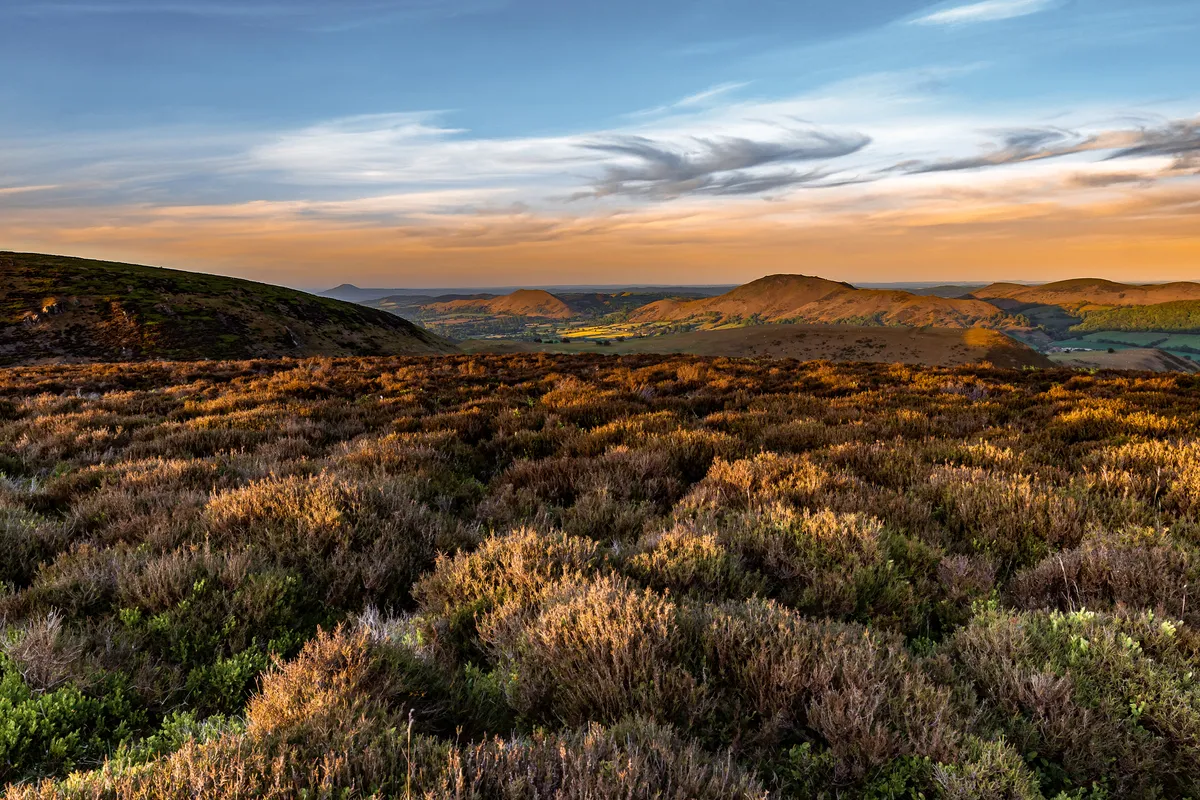
The town of Church Stretton in Shropshire began life as a Saxon settlement on a Roman Road, so it’s of venerable age. But the peaks crowding round it are truly ancient, created by volcanic lava and ashes about 566 million years ago when southern Britain was somewhere near the South Pole.
Peering into town from the east are the hills of Caradoc, Lawley and Ragleth, while the Long Mynd plateau looks in from the west, and the Roman Road (now the A49) and the railway occupy the fault line between them. Carved by melt-water from snowfields and retreating glaciers 20,000 years ago, these valleys are now strewn with footpaths up to the hills
Walk its age-old tracks, root around Church Stretton's cavernous antiques market, and end the day at a tradition country pub – why not try the Kings Arms or the Bucks Head.
The King's Head, Aylesbury, Buckinghamshire
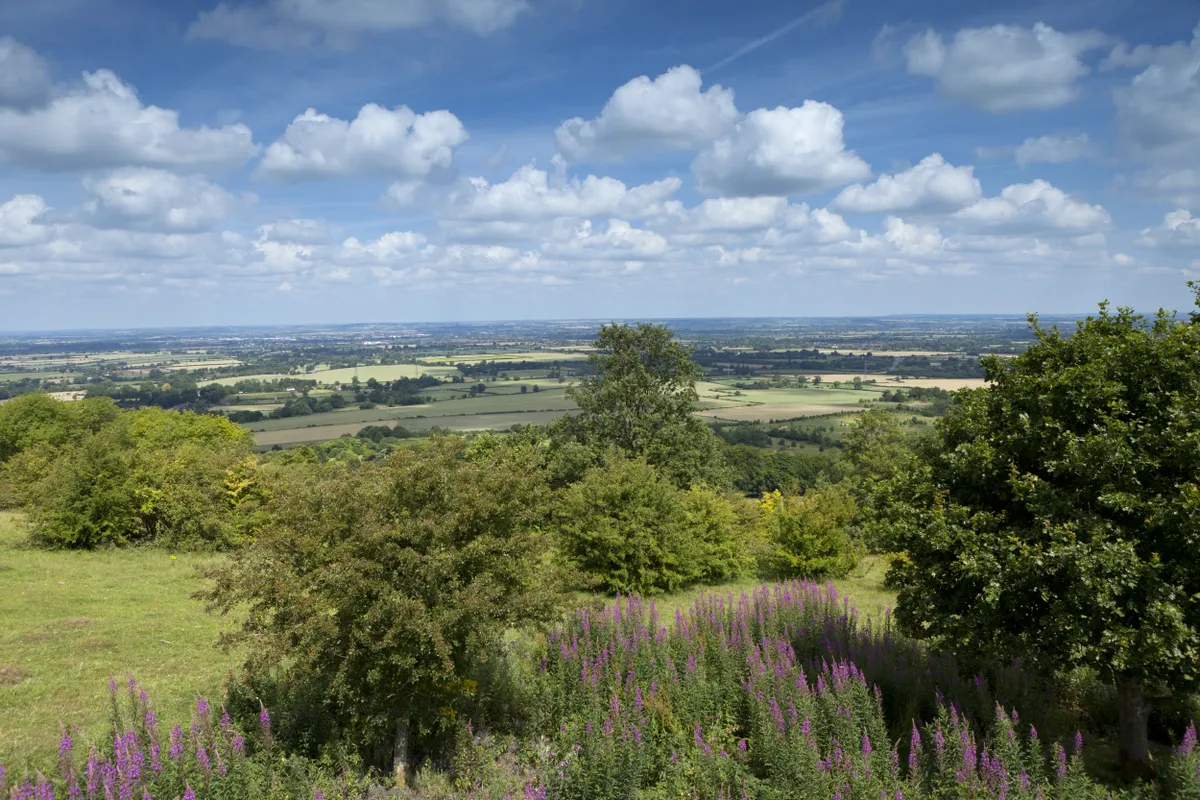
Set in the heart of this historic market town, the 15th century King's Head is one of England's best preserved coaching inns. Dating back to 1455, the building has many fascinating architectural features, including rare stained-glass windows, exposed wattle and daub and the original stabling for the inn. Take a walk in the nearby Chilterns countryside, and afterwards visit the pub for a refreshing drink.
The Tiger Inn, East Dean, East Sussex
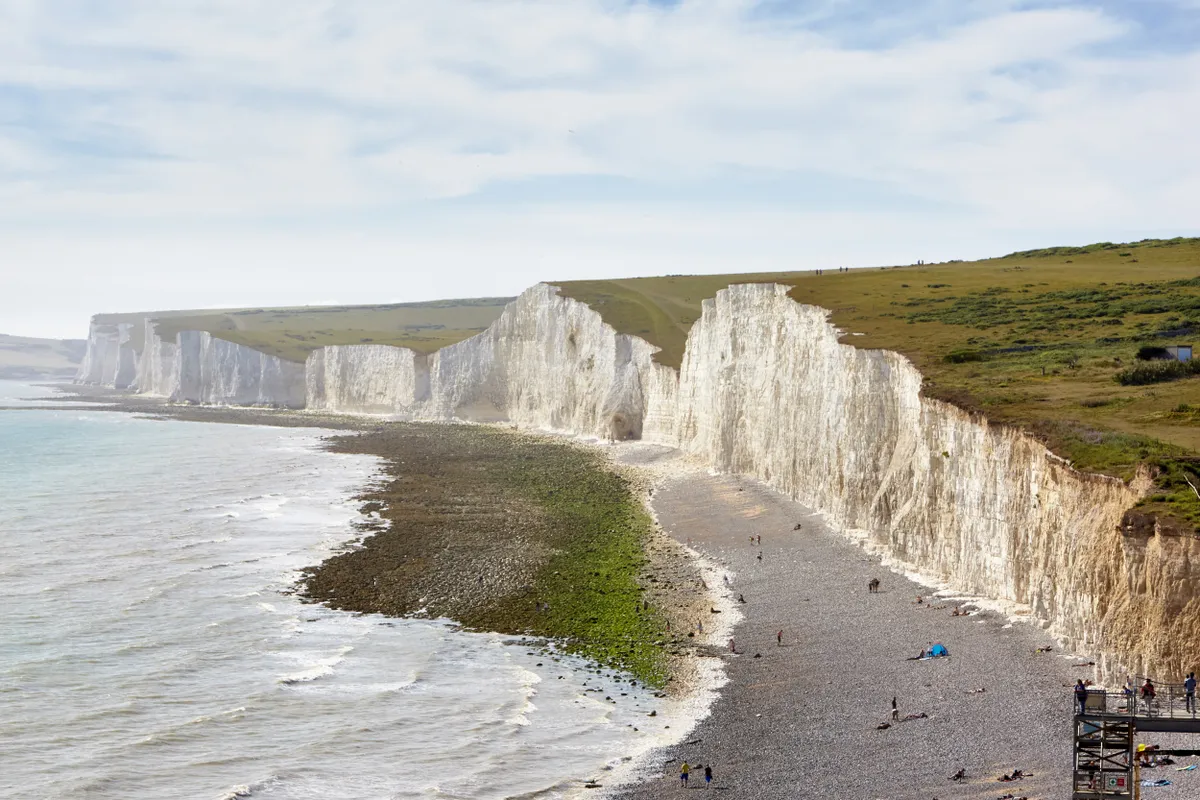
The Tiger Inn is the perfect end point for a number of walks down to Birling Gap, part of the Seven Sisters chalk cliffs.
The George Inn, Slindon Estate, West Sussex
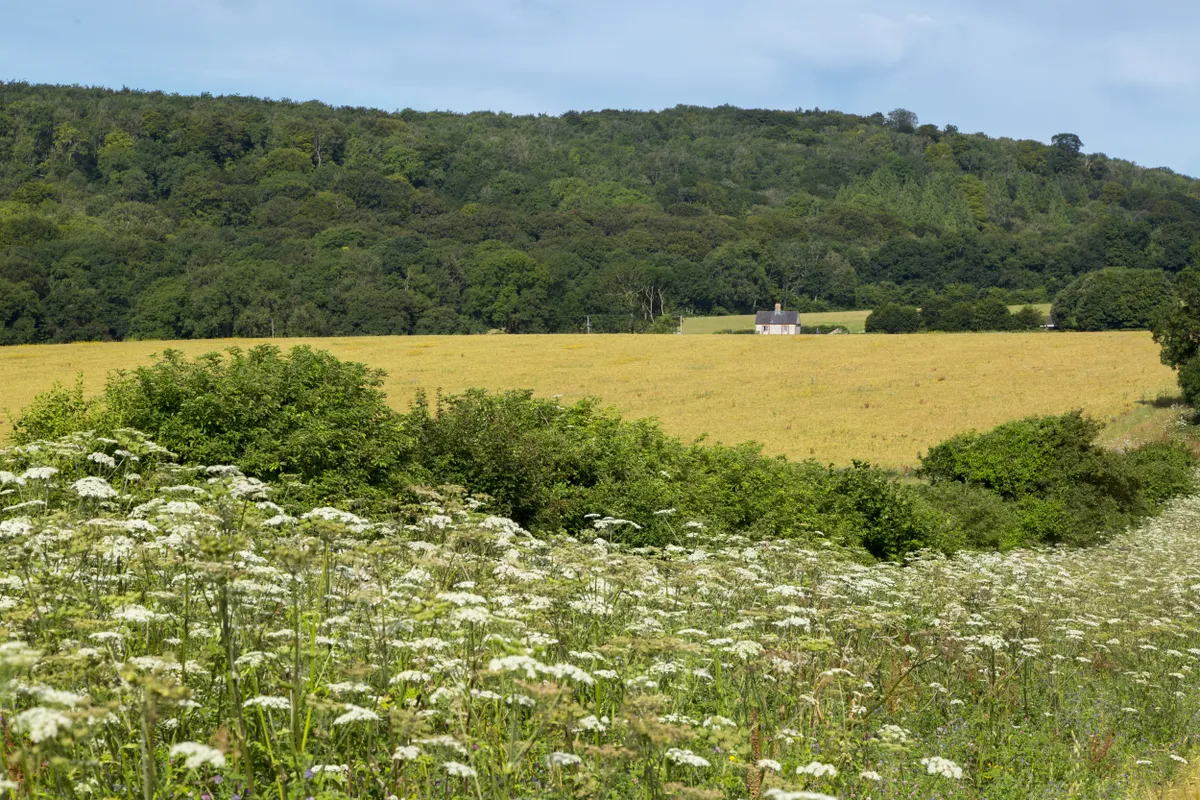
This walk around Nore Hill Folly from The George Inn at Eartham is perfect for warm days in spring, summer, and autumn, with much of the route overhung and shaded by trees. Beginning and ending your walk at The George makes it an ideal place to relax.
Highmeadow Woods, Gloucestershire
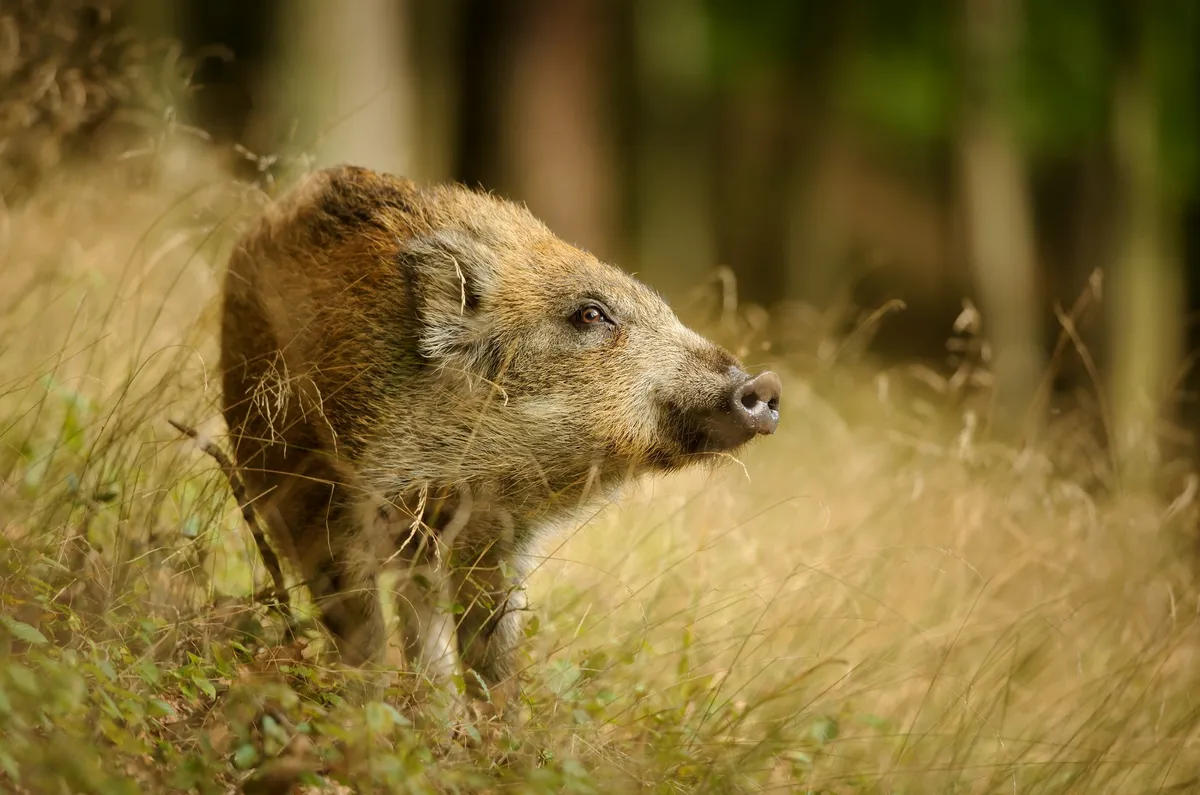
The Forest of Dean’s forested plateau spills into the Wye’s tortuous gorge via a string of scarps, wooded embayments and side-valleys turning amber and orange. Exploring deer-rich Highmeadow Inclosure, this serene countryside is best seen towards sunset, when the views to the Black Mountains are breathtaking.
Thread through the Forest of Dean's autumnal trees, stopping off half way at the White Horse Inn, before winding back on a woodland path.
Peel Crags and Sycamore Gap, Northumberland
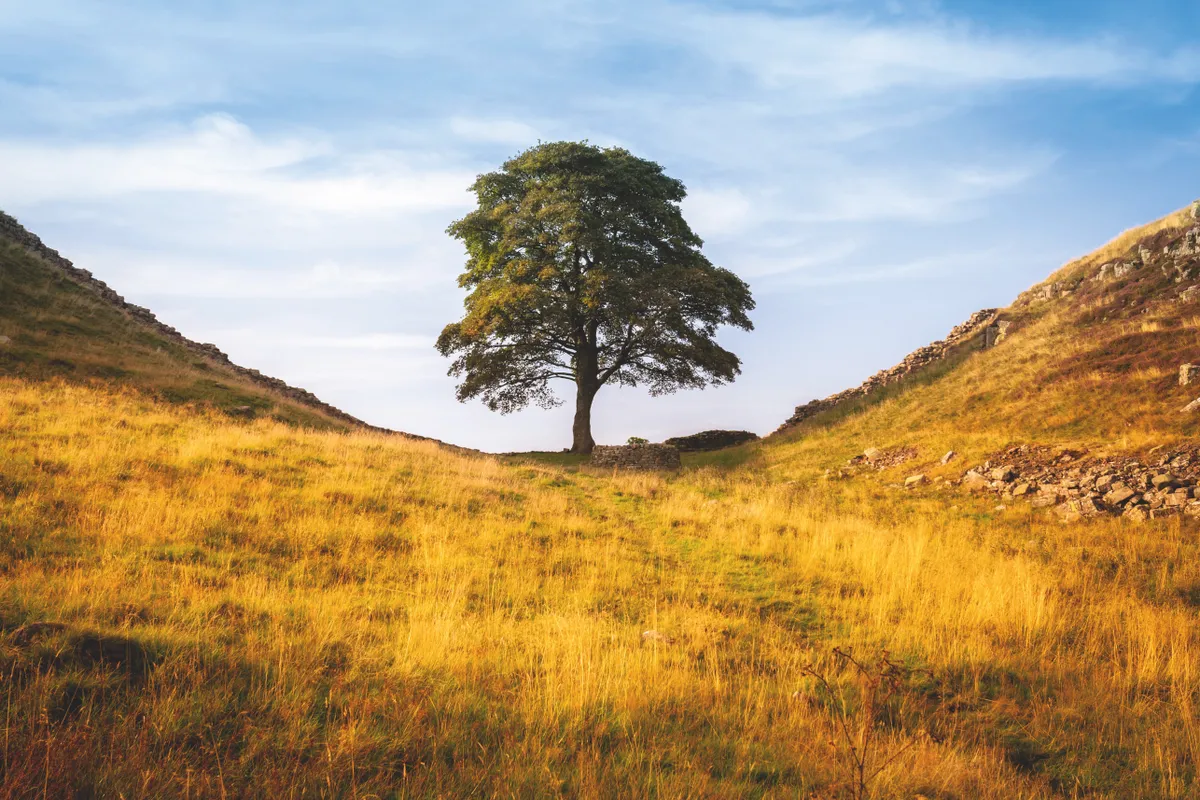
What did the Romans ever do for us? Well, they built a very long wall, set among miles of lonely, surging hill country. And although they didn’t construct the Twice Brewed Inn, the pub is beautifully positioned just to the south of Hadrian’s Wall and is the ideal starting point for exploring one of its dreamiest sections.
This is a stirringly beautiful walk whatever time of year you visit. But in an ideal world you would walk this route on an early autumn evening, when the sun starts to dip and fill what feels like the whole of Northumberland with a burnished gold.
Monsal Dale, Derbyshire
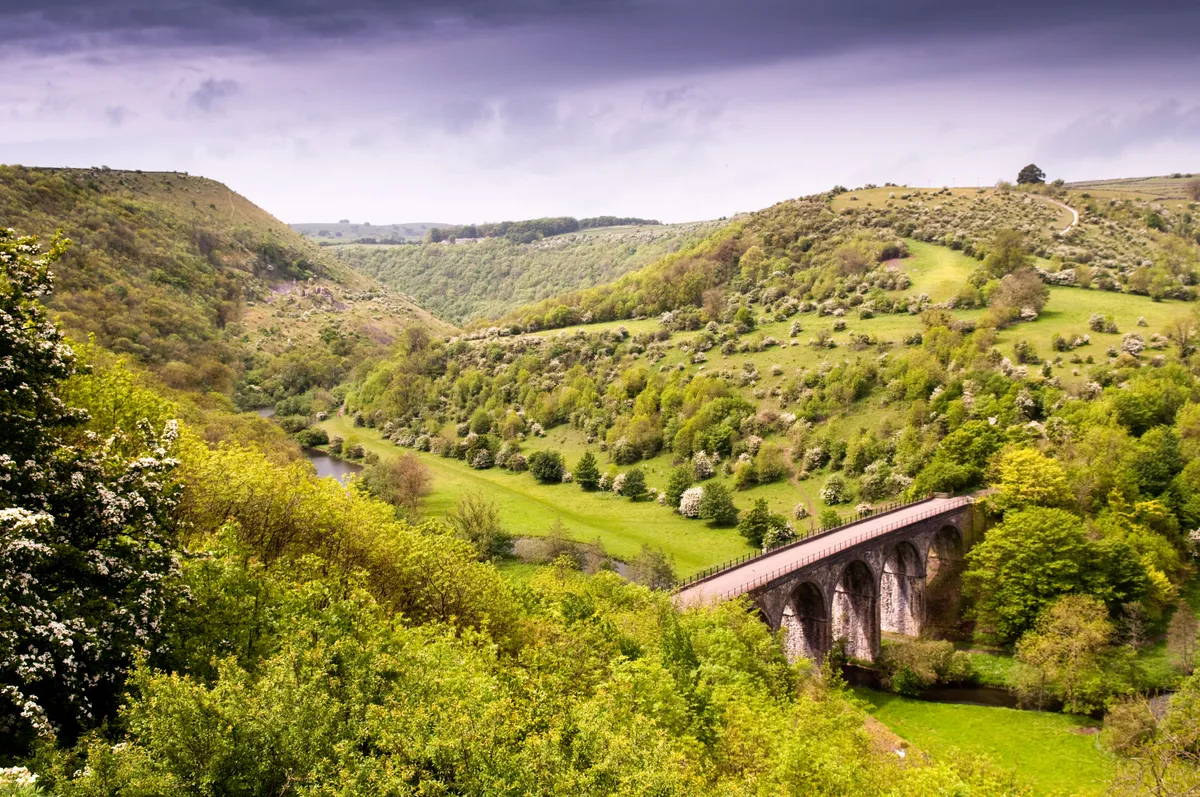
Ramble the high tracks and waterside paths of Monsal Dale in the Peak District National Park. The walk starts and finishes on the edge of Little Longstone where autumn walkers can refuel with drinks and food at one of two delightful pubs – the Monsal Head Hotel or the Packhorse Inn.
The Fleece Inn, Bretforton, Worcestershire
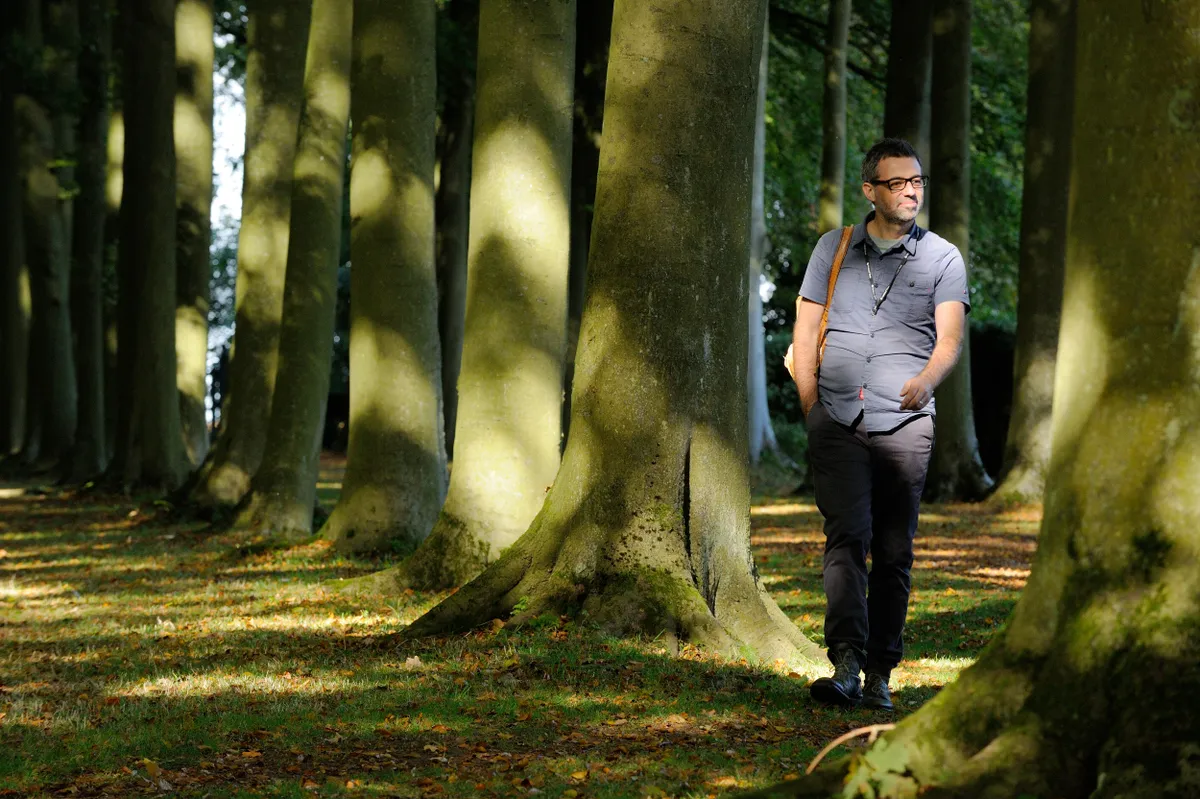
The Fleece Inn at Bretforton was first licensed in 1848 but was originally built as a farmhouse. It’s just a stone’s throw from the walking wonders of the Cotswold Way National Trail at Chipping Camden, or take a trip to Hidcote for a peaceful garden stroll.
The Bucks Arms, Blickling, Norfolk
Victoria Hotel, Robin Hood's Bay, Yorkshire
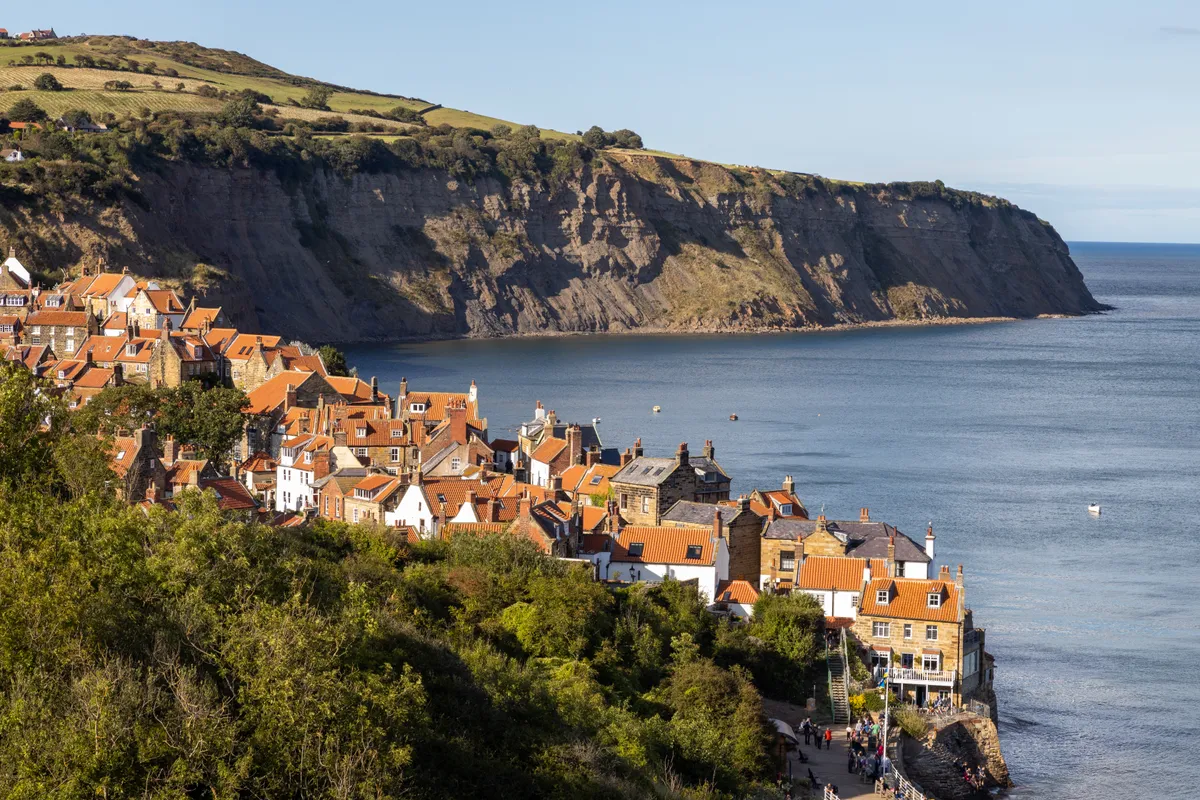
The public bar of the cliff-top Victoria Hotel, built in 1897, is a wonderful spot to get in a few rounds. With a warm and friendly atmosphere, it hosts regular quiz nights and theres a roaring fire on colder nights. But it comes into its own in the summer, as the large beer garden looks out over the fantastic sweep of Robin Hood's Bay, near Whitby. Listen to the waves crash below as you sup on ales from the local area after a long satisfying day of exploring the North Yorkshire Heritage coastline.
The Sticklebarn Tavern, Great Langdale, Cumbria
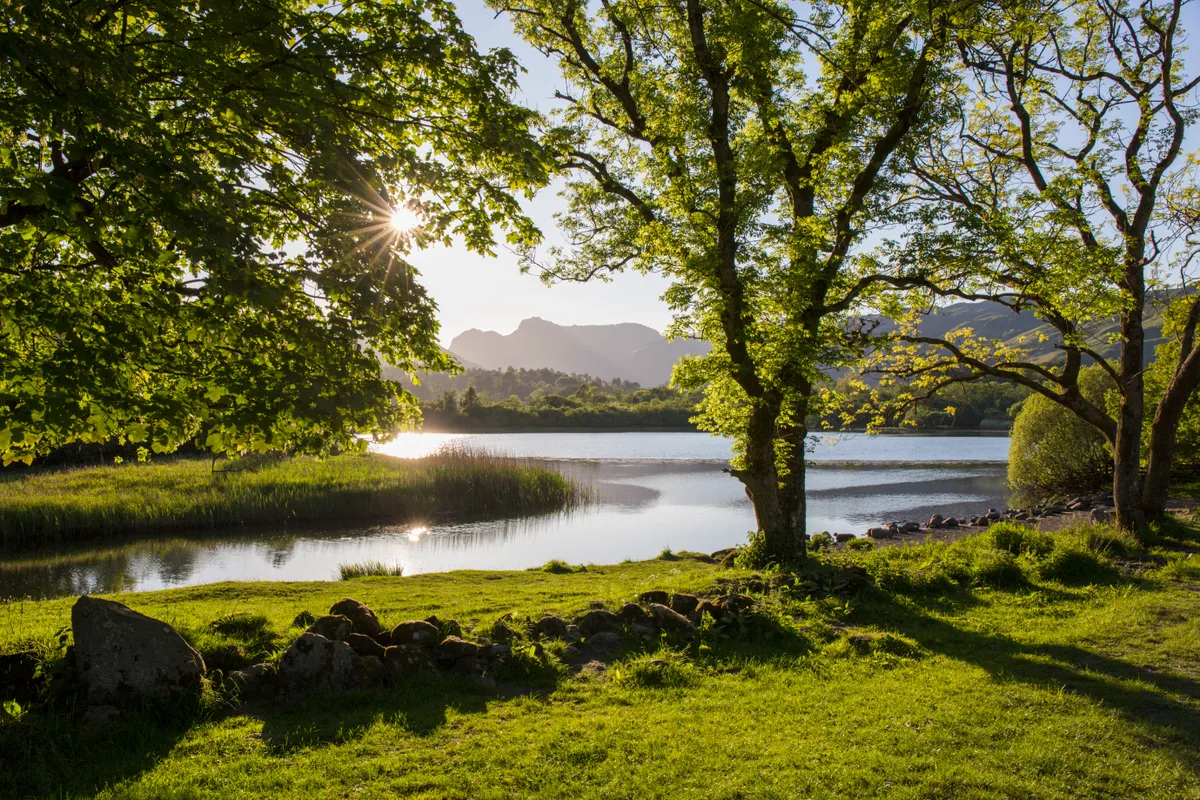
Nestled on the valley floor, Sticklebarn pub is the ideal gateway to walking in Great Langdale, home to the lofty Langdale Pikes. You’ll find plenty of low-level walking in the valley, with views as refreshing as Sticklebarn’s tasty local tipples.
Tower Bank Arms, Near Sawrey, Cumbria
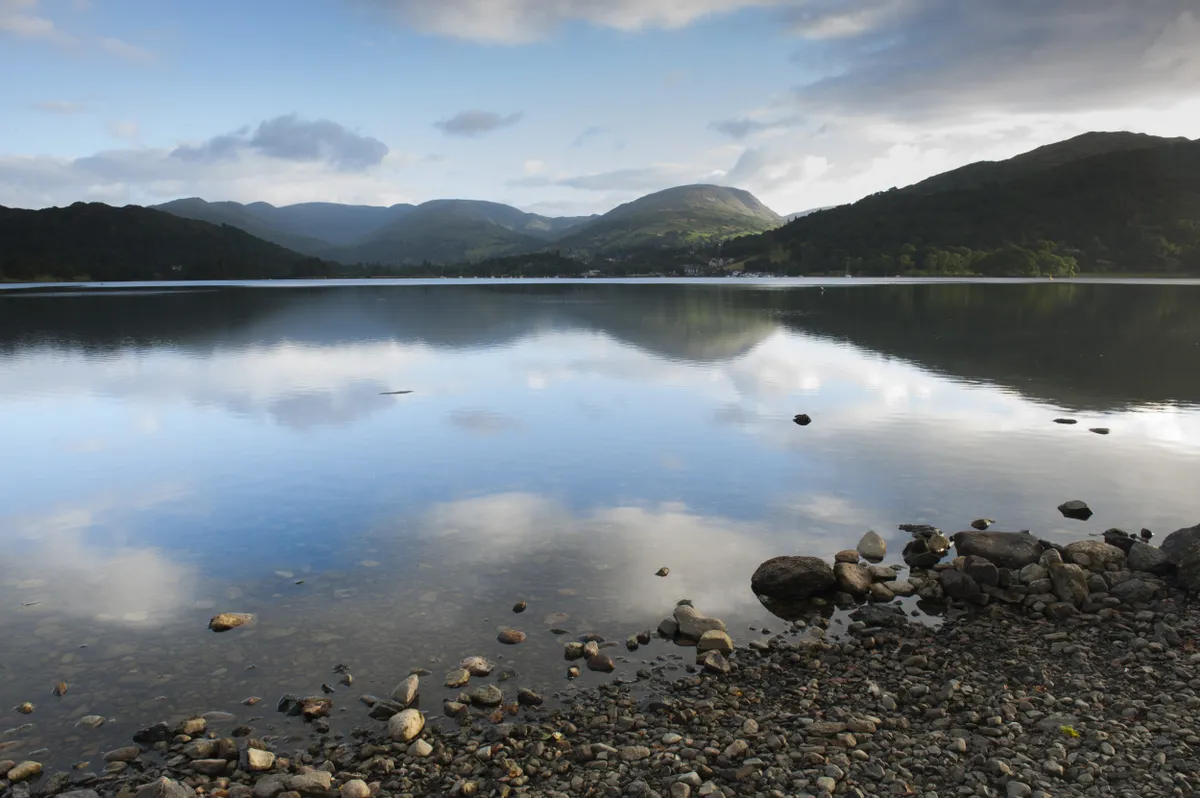
Right next door to Hill Top, Beatrix Potter’s farmhouse, the Tower Bank Arms in Near Sawrey offers a cosy retreat after a good stomp in the Lakes. Go on a lakeside amble along Windermere, climb up Latterbarrow or take a romantic stroll up to Moss Eccles Tarn, much loved by Potter herself before seeking out this cosy pub.
Teign Gorge, Devon
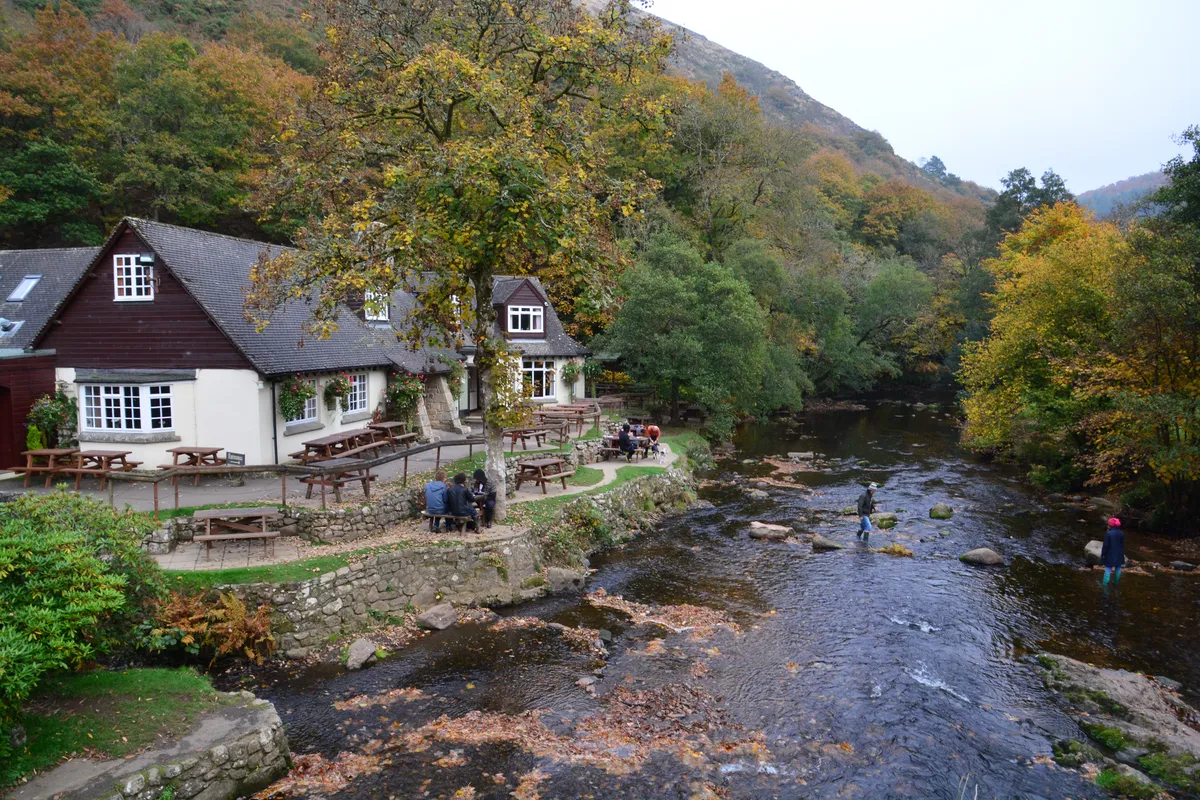
The River Teign tumbles off windswept moors, swirling and carving through a spectacular gorge overhung with crooked oaks and beeches. The fresh air invigorates the soul, and in autumn, the peace is occasionally broken by the chilling bellows of a stag ready to rut.
Take a walk from Castle Drogo to the Fingle Bridge Inn. The route passes through Piddledown Common and Fingle Wood, one of England’s largest woodland restoration projects.
The Gurnard's Heads, St Ives, Cornwall
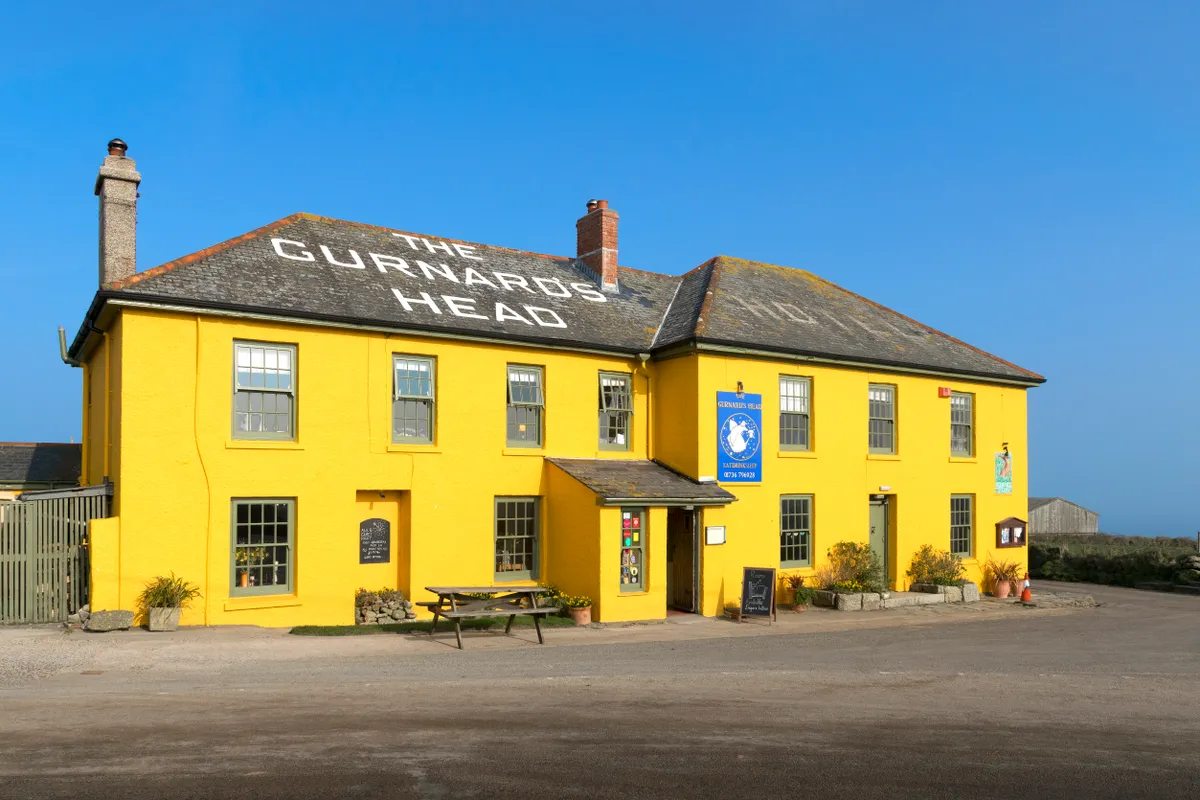
Right on the very tip of Cornwall's toe, at the end of a pretty, winding road, lies The Gurnard's Head. The long journey down will be worth it when, pint in hand, you look out over the vast Atlantic, take in the sea air and feel yourself relax instantly. There's no need to rush back, either, as this family-run pub also offers locally sourced food and comfortable beds for a great nights' sleep by the sea.
Rydal and Grasmere, Cumbria
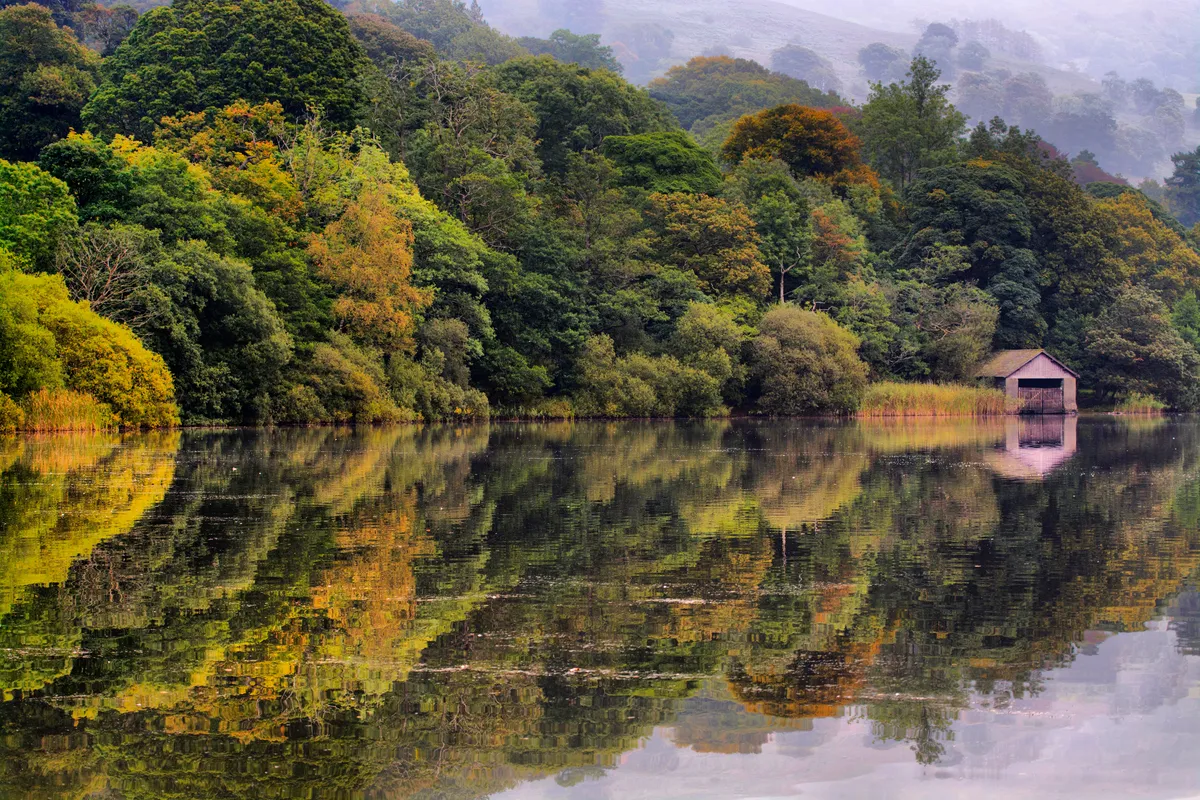
On 23 October 1802, Dorothy Wordsworth wrote in her journal: “A breathless, grey day that leaves the golden woods of autumn quiet in their tranquillity, stately and beautiful in their decaying. The lake is a perfect mirror.”
This six-mile circular tour around Grasmere and Rydal Water illustrates perfectly how her description of the autumnal landscape is just as evocative today as it was when she wrote it in her journal 215 years ago. The route starts and finishes at Rydal, home to the Badge Bar – the perfect reward after a day on the trail.
Padley Gorge, Derbyshire
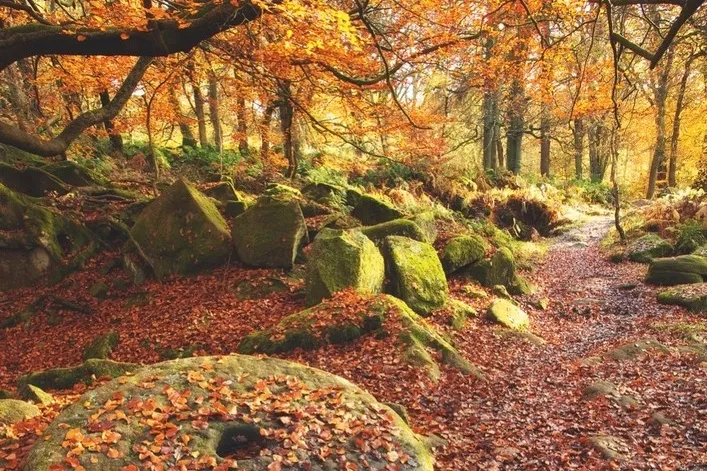
The river Derwent arcs through the eastern Peak District in a wooded vale with looming moorland shoulders. Tributaries tumble from the tops, foaming amid wizened woodlands little-changed in centuries. Padley Gorge has the best of these, draining Burbage Moor to the Derwent at Grindleford.
An enchanting stroll explores this chasm, pausing midway along to route at the cosy Sir William Hotel., before looping up through woodland-shrouded industrial heritage.
Delamere Forest, Cheshire

Graded forest roads offer easy ways to explore the beautiful the mixed woodlands of Delamere Forest. Here and there your paths cross primeval meres – atmospheric relics of the Ice Age.
Experience striking autumn contrasts on this gentle walk in Cheshire's ancient green heart, stopping of for a half-way pint at The Carriers Inn.
Forge Valley Woods, North Yorkshire
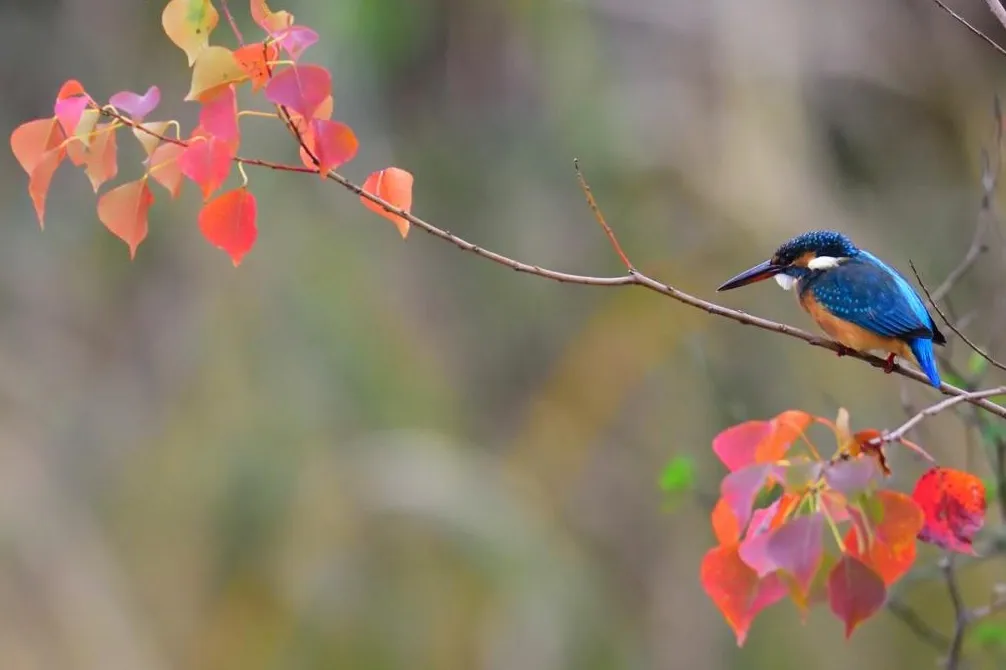
This beautiful nature reserve on the banks of the River Derwent in the North York Moors National Park was once home to iron smelting.
Today it's a peaceful spot, so go quietly and you may see an otter or kingfisher on your way to East Ayton, where there are two country pubs – the Denison Arms and Ye Olde Forge Valley Inn.
Gosforth, Cumbria

The venerable Wasdale Head Inn, hidden within the valleys and mountains of the Lake District, has housed some of Britain's best novelists and poets – find out what inspired these great writers with a five-mile walk.
The walks in the area encompass everything that a Lakeland explorer could hope to find but should be treated with the utmost respect in the icy months. A relatively straightforward but still glorious excursion can be had by climbing north-east to the waters of Styhead Tarn.
Norham Castle, Northumberland

Visit Norham Castle on the banks of the River Tweed and enjoy a historic woodland and riverside stroll through the village and surrounding countryside.
Finish at Norham itself, an attractive and peaceful village, with the Mason Arms a perfect spot for a post-walk meal or refreshment.
Ship Inn, Porlock, Somerset
Best pub walks in Wales
Tanronnen Inn, Beddgelert, Gwynedd
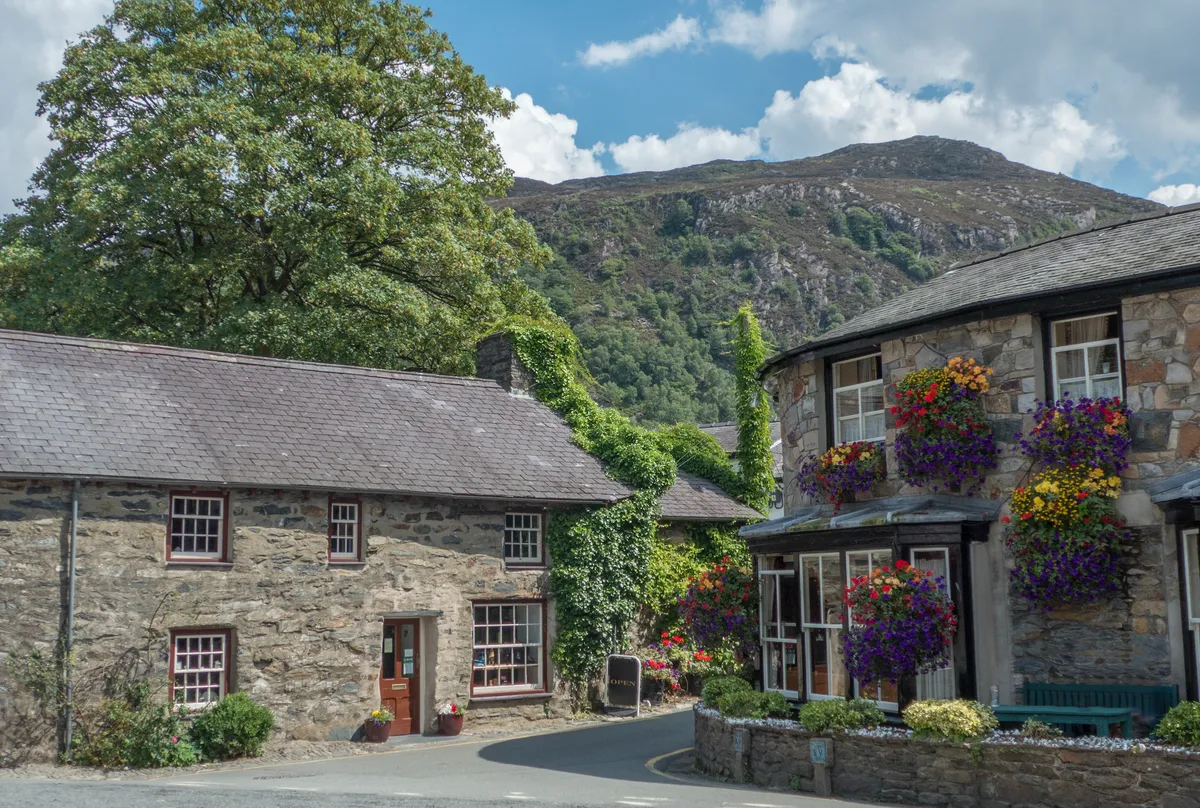
The breathtaking village of Beddgelert is situated in the Snowdonia national park. Nestled in a valley dominated by mountains it sits at the convergence of two rivers, the Glaslyn and Colwyn. Attractive bridges cross the water and lead to many captivating walks in Snowdonia. Enjoy a walk to Llyn y Dywarchen, then head to the Tanronnen Inn, a traditional pub in the heart of the village.
Skirrid Inn, Monmouthshire
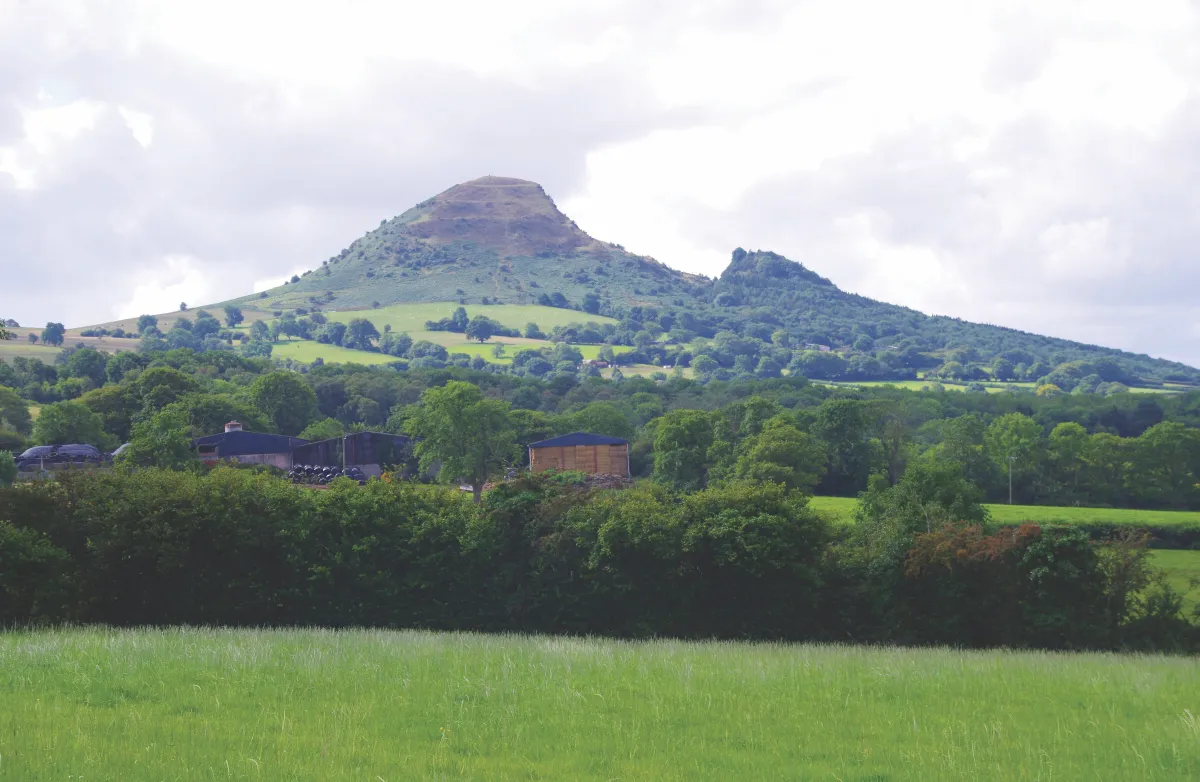
The Skirrid stands at 486m, but the route’s relatively short distance means the journey can be done in a morning. Stop for lunch at the equally notorious Skirrid Mountain Inn, the site of many a ghostly encounter. You can also stay a night, if you dare.
Tŷ Coch Inn, Porthdinllaen, Llŷn Peninsula
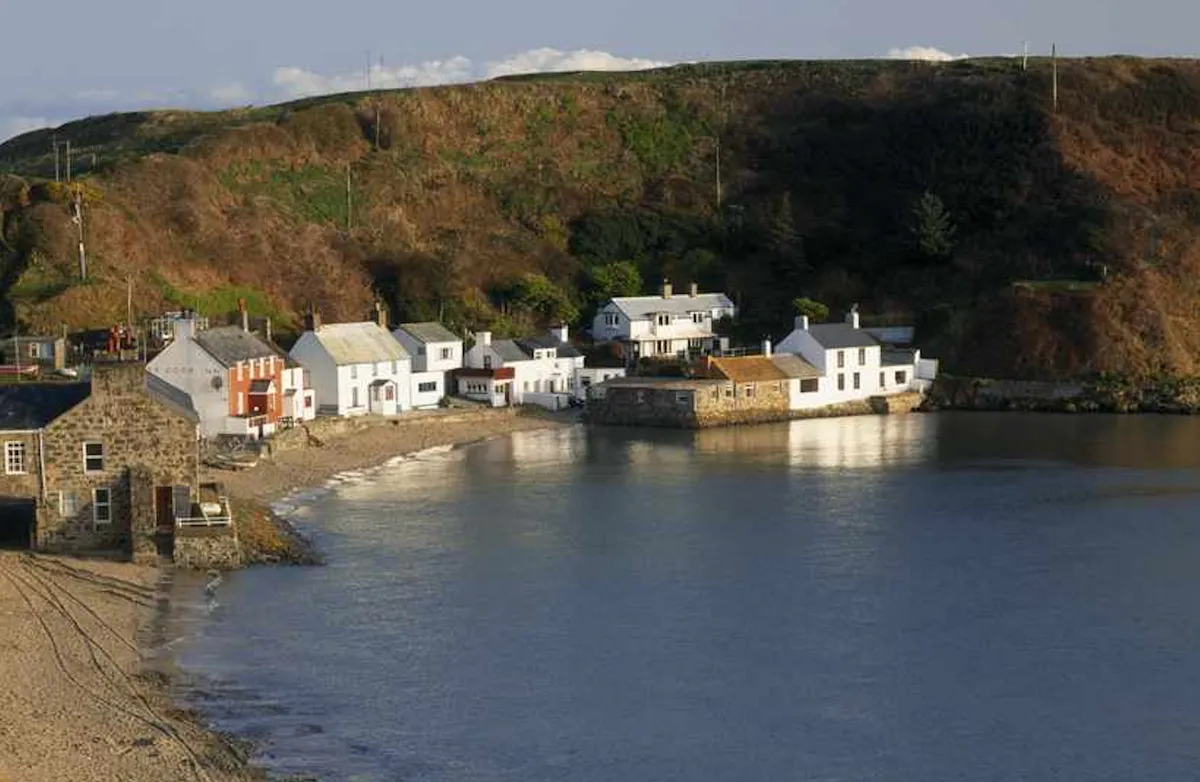
Porthdinllaen on the Llŷn Peninsula is a spectacular spot to enjoy a walk on the coast with magnificent views, fine sandy beaches, a chance to watch the comings and goings of local fishermen. The Tŷ Coch Inn, is on hand to provide refreshments.
Llanbedr Woods, Gwynedd
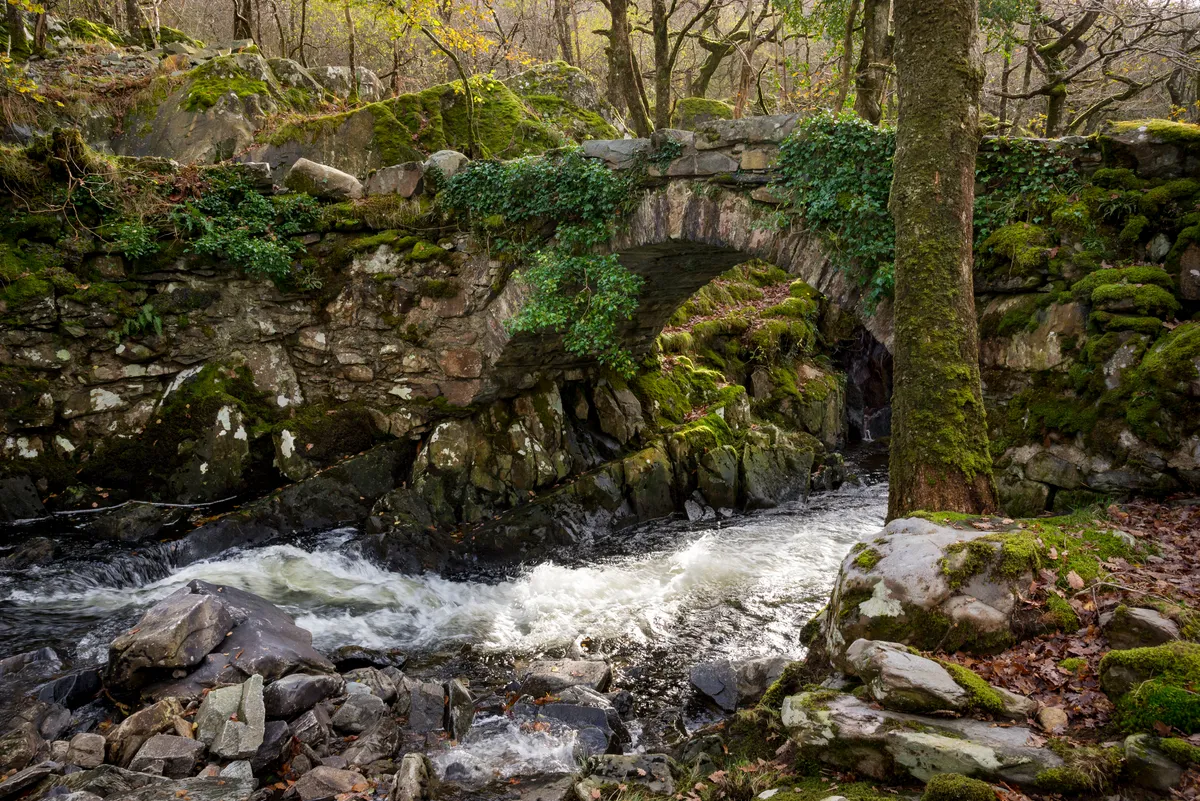
Now a Conservation Area, the oak woods hugging the hillsides above Afon Artro form a fine example of temperate forest that once covered most of Wales.
Pass through this ancient woodland teeming with wildlife in north-west Wales with this 6.5-miles walk, especially glorious in late summer and autumn when the woods are filled with colour and foraging creatures. For a well-deserved drink, head to The Victoria Inn in Llanbedr.
Cwellyn Arms, Gwynedd

For those exploring Snowdonia, this traditional Welsh pub sits at the foot of the areas great mountain. Amid such famed walking country, the Cwellyn Arms strives to provide just what tired ramblers need; great beers, simple, hearty food and log fires by which to warm cold and weary feet.
The Bear, Crickhowell, Powys
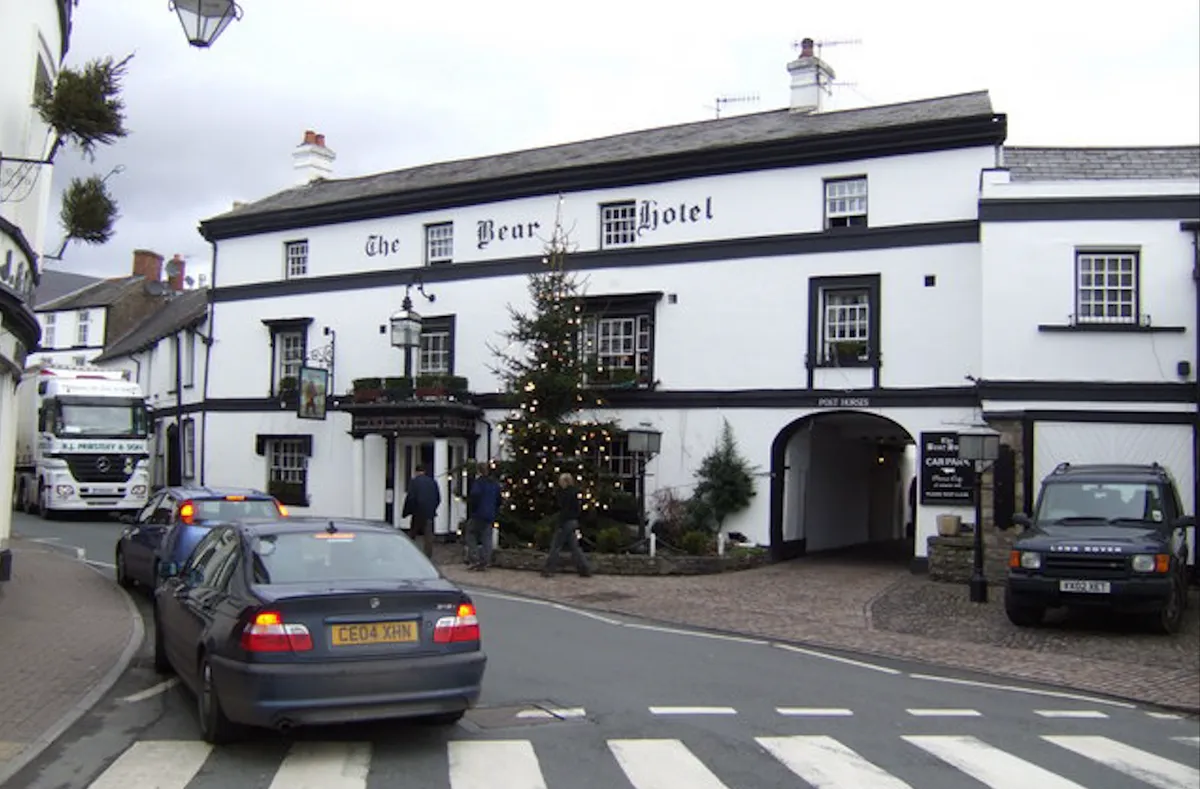
This former coaching inn – with its oak beams, wooden floors and open fires – offers the same warmth to locals and visitors that is has done for over 500 years. The iconic Bear Hotel sits in the centre of the charming town of Crickhowell, surrounded by dramatic hills and peaceful woodlands in the midst of the Brecon Beacons National Park.
Red Lion, Llanbedr, Monmouthshire
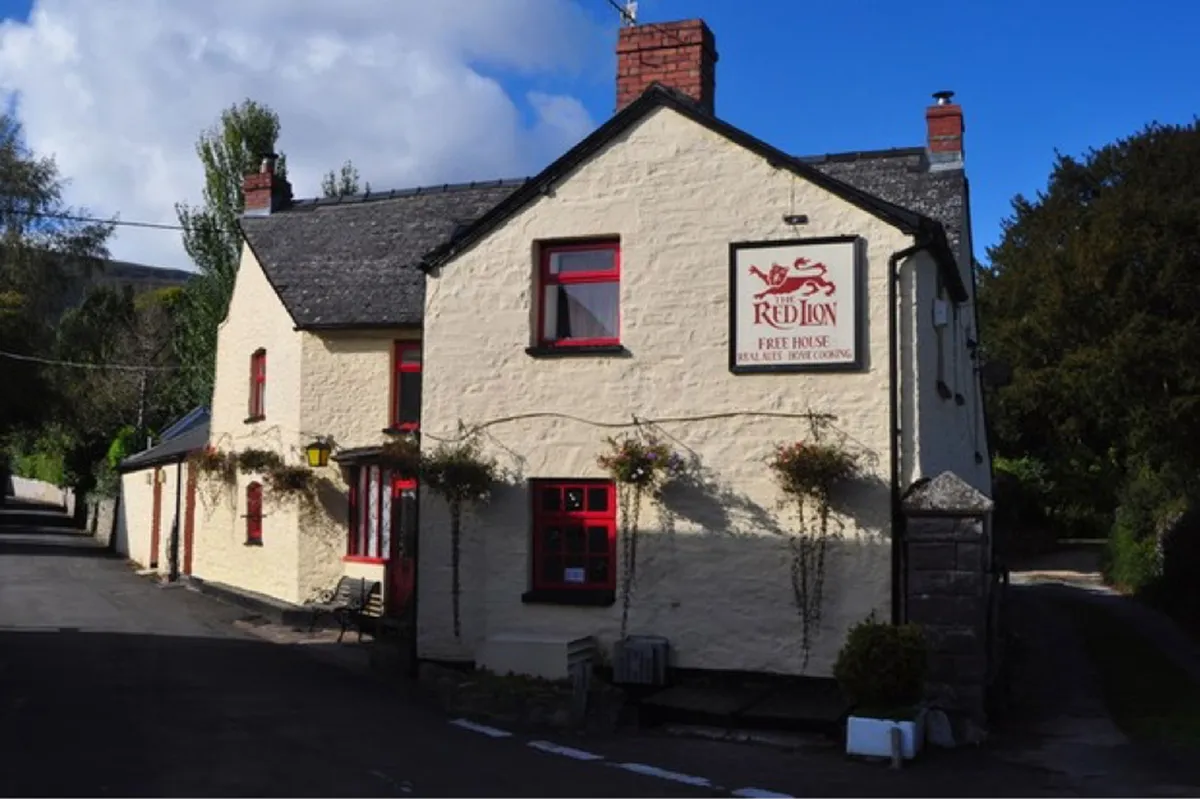
A huge welcome and very cosy stone-built pub deep in a Black Mountains valley – the perfect target after a cold blow on the tops of some of the Brecon Beacons' least-known ridges. Open fire, real ale, and home-cooked food. Make sure you leave muddy boots outside The Red Lion.
Llanthony Priory, Monmouthshire
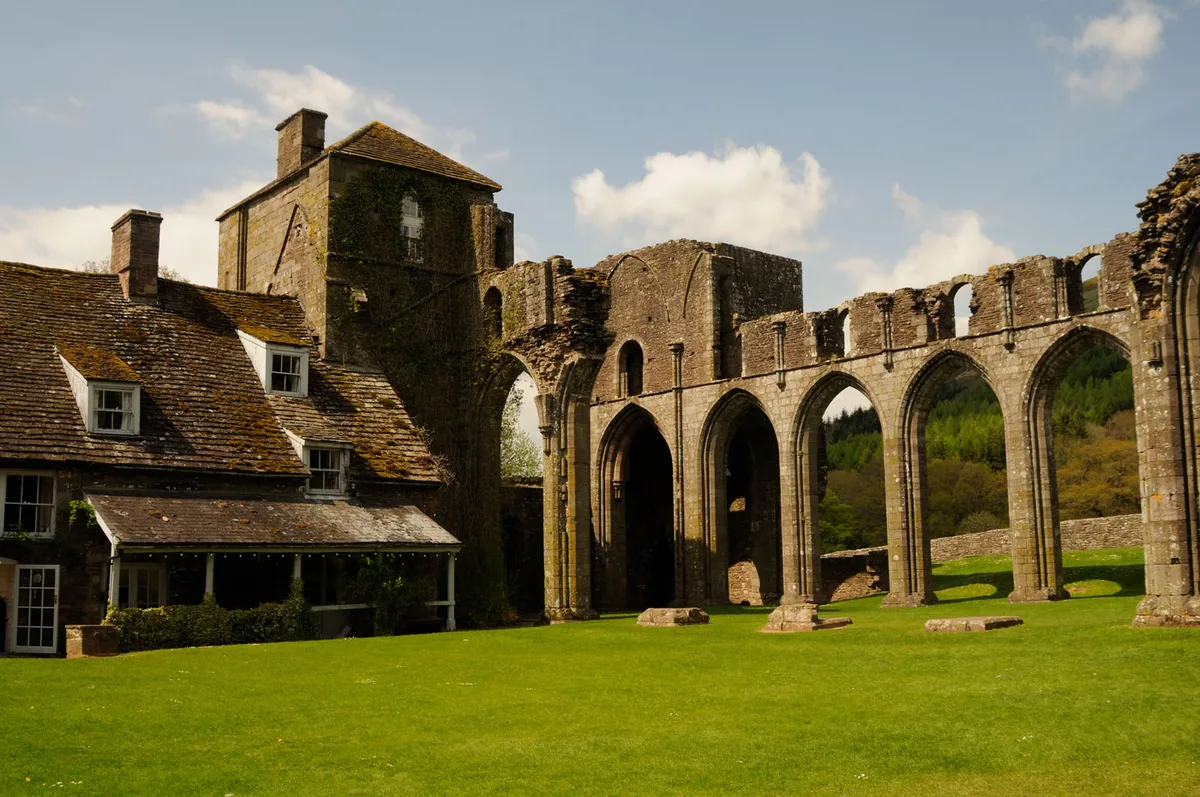
The cellar of Llanthony Priory offers a stunning location in a Black Mountains’ valley to sit and have a beer after a walk along Offa’s Dyke. llanthonyprioryhotel.co.uk
Best pub walks in Scotland
The Applecross Inn, Applecross, Wester Ross
Birks of Aberfeldy, Perthshire
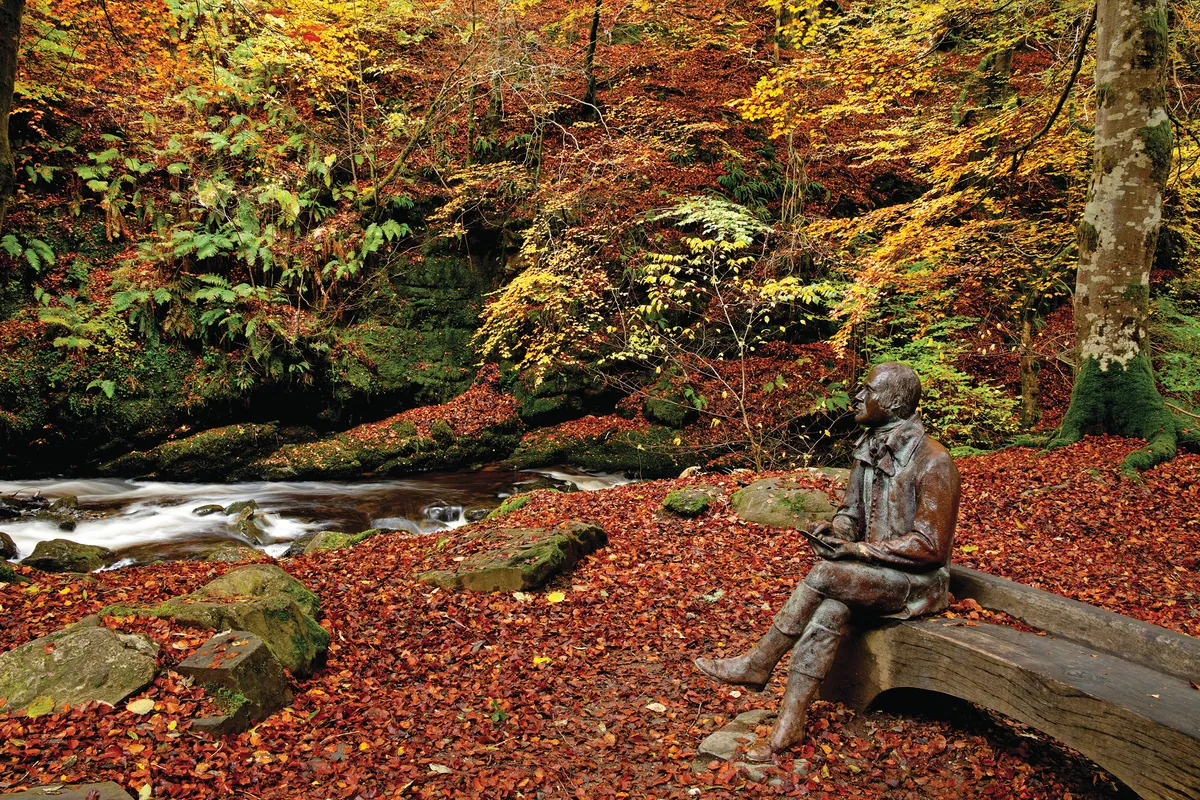
When Robert Burns came to visit Aberfeldy in 1787, he was so impressed by the spectacular waterfalls and birch woods outside that he wrote a poem celebrating the area’s natural beauty.
Today, a 4.5 mile circular path allows you to follow in his footsteps and be equally inspired by this amazing place – experience this jaw-dropping gorge path, ending the walk at either The Fountain or the Black Watch.
Ratho, Edinburgh
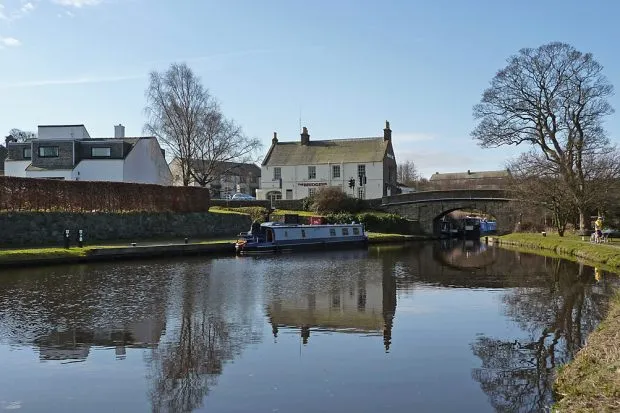
The great thing about this pub walk is that you don't need a map. Simply step out of the Bridge Inn pub door, cross the river on the old stone bridge and join the towpath.
The canal stretches east to west and offers miles and miles of trail. Autumn is a great season to visit, as the trees' rusty leaves cast rippled reflections on the surface of the canal.
Moulin Hotel, Highlands
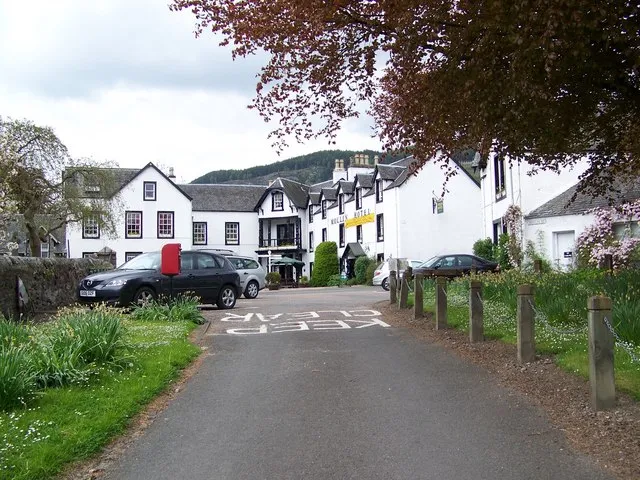
After a day hiking in the Cairngorms mountains, there is little more rewarding than stepping into The Moulin Hotel for a pint of ale by the fire – this warm, cosy pub on the outskirts of Pitlochry has been serving beer for three centuries. moulinhotel.co.uk/inn/pub
Kings House Hotel, Highland
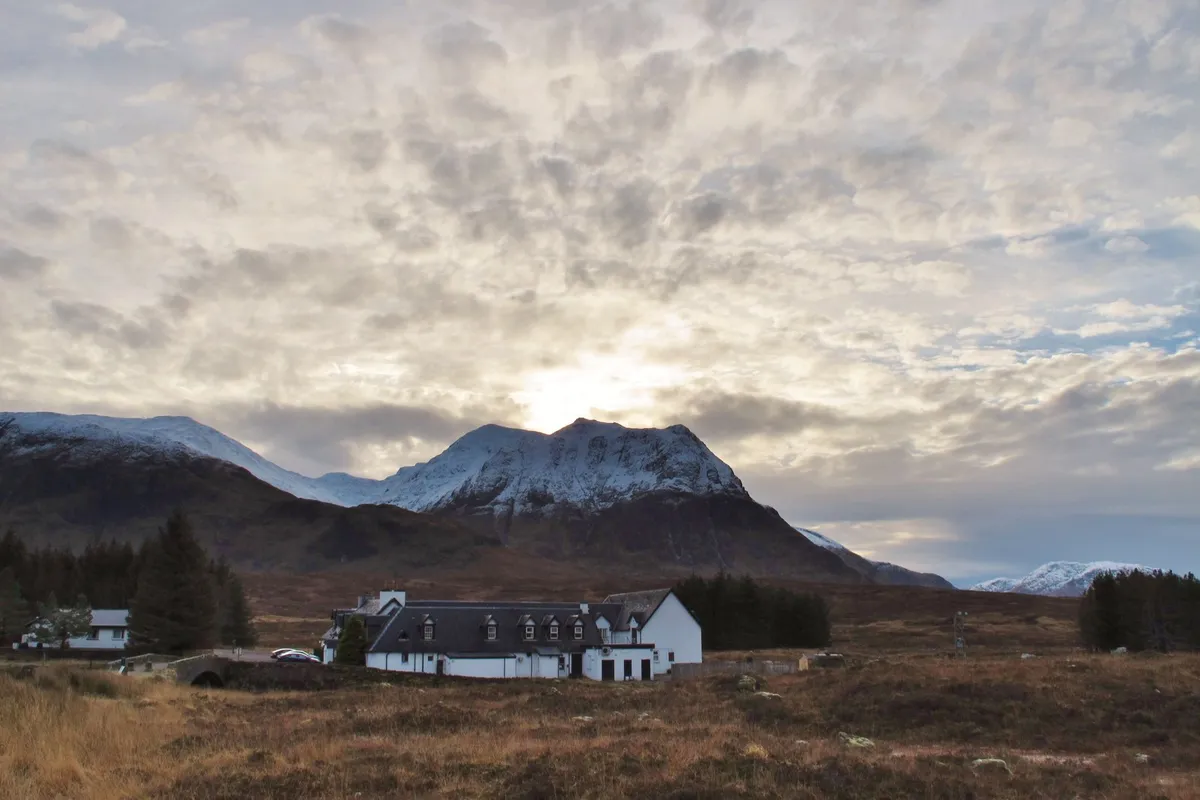
The cosy Kings House Hotel sits at the gateway to mighty Glencoe beside the West Highland Way. It caters almost exclusively for hikers, bikers and outdoor enthusiasts, offering an opportunity to share tale beside a crackling log fire.
The Old Forge, Inverie, Highland
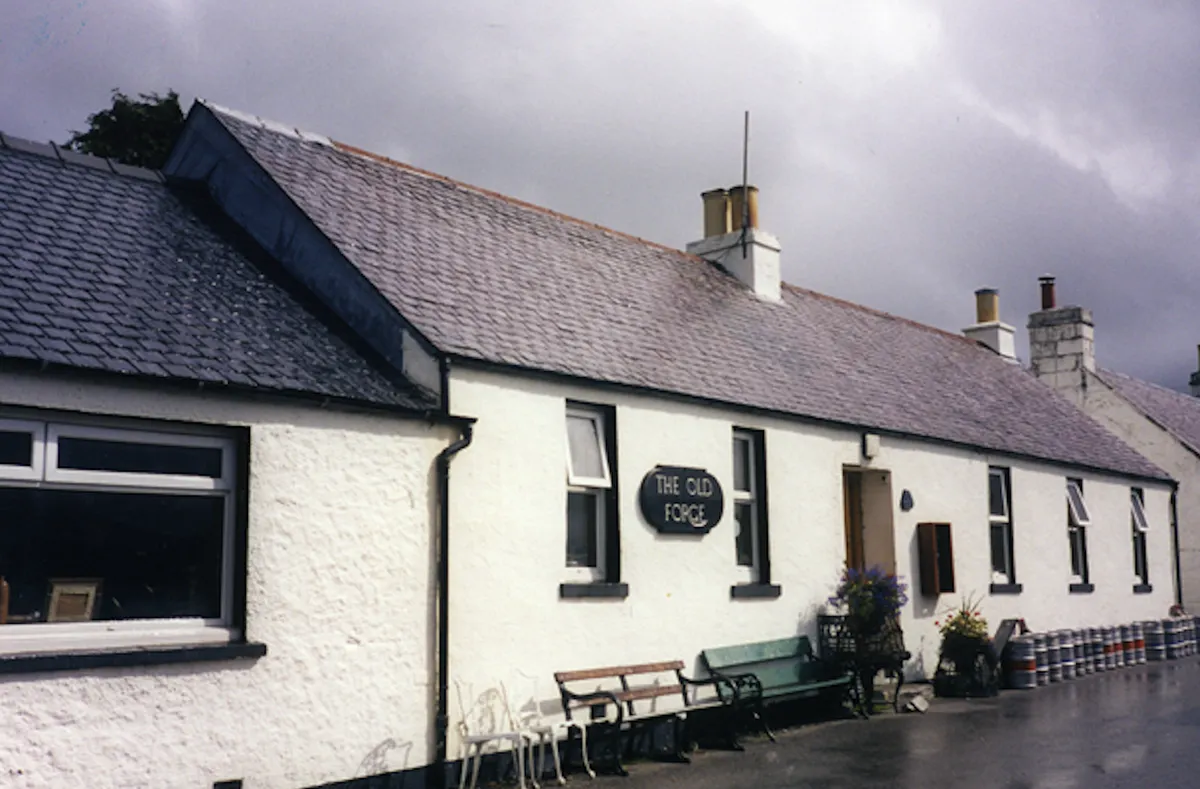
The Old Forge pub is seriously remote, and those wanting to drink it beer and eat its food will have to endure either an 18-mile mountain hike or a seven-mile sea crossing to do so. But once settle upon its wooden stools, surrounded by locals and travellers alike, visitors rejoice in these journeys and plans for new ones are born.
The Drover’s Inn, Inverarnan, Stirlingshire
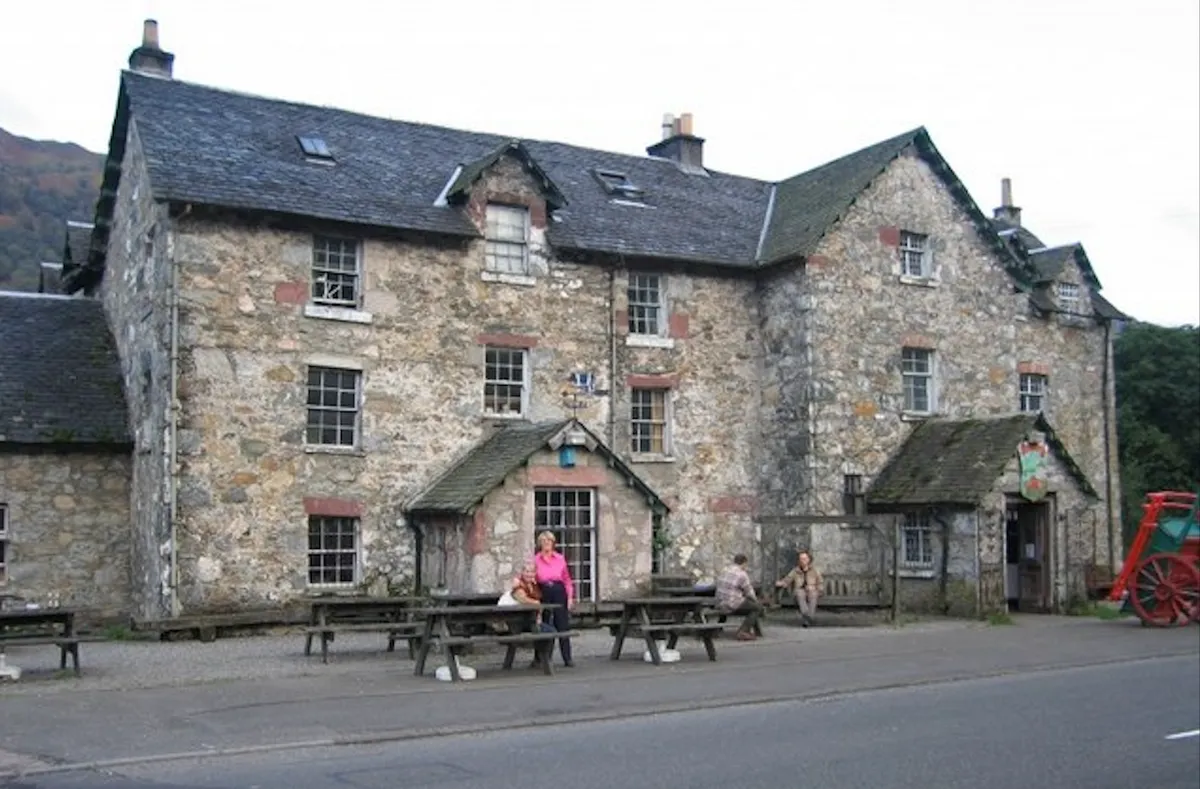
This friendly inn has a disclaimer on its website that says it all: "We would like to remind residents that the Applecross Inn is a lively bar and does generate some noise." Live music and merriment aside, this pub ticks all the boxes - from views across to the mountains of Skye to tasty seafood and cosy rooms.
Perched among trees, hills and mountains at the northern end of Loch Lomond is The Drover's Inn. The surrounding national park is a playground for hikers, bikers and other outdoor enthusiasts – after a day of adventuring, head to this classic walkers' inn for food, drink and a place to lay your head for the night.
Traquair Arms Hotel, Innerleithen, Scottish Borders
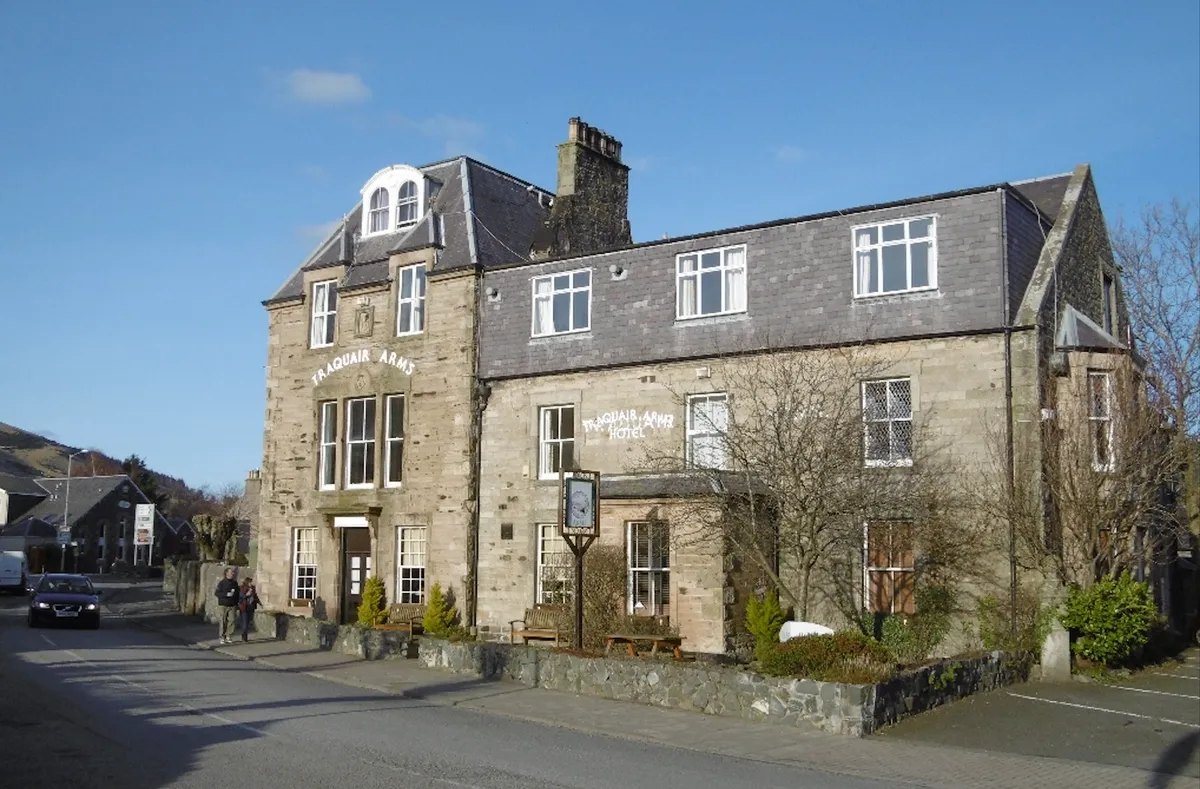
Traditional, cosy and over 200 years old, the Traquair Arms Hotel in Innerleithen has all the charm and history that a walker could ask for. Spend a day wandering the borderlands then head to the hotel for an evening of wholesome dishes made from locally sourced ingredients. 16 beautiful en suite rooms, as well as self-catering cottages, means you don't have to travel far for a well-earned night's sleep.
Best pub walks in Northern Ireland
The Crown Bar, Belfast
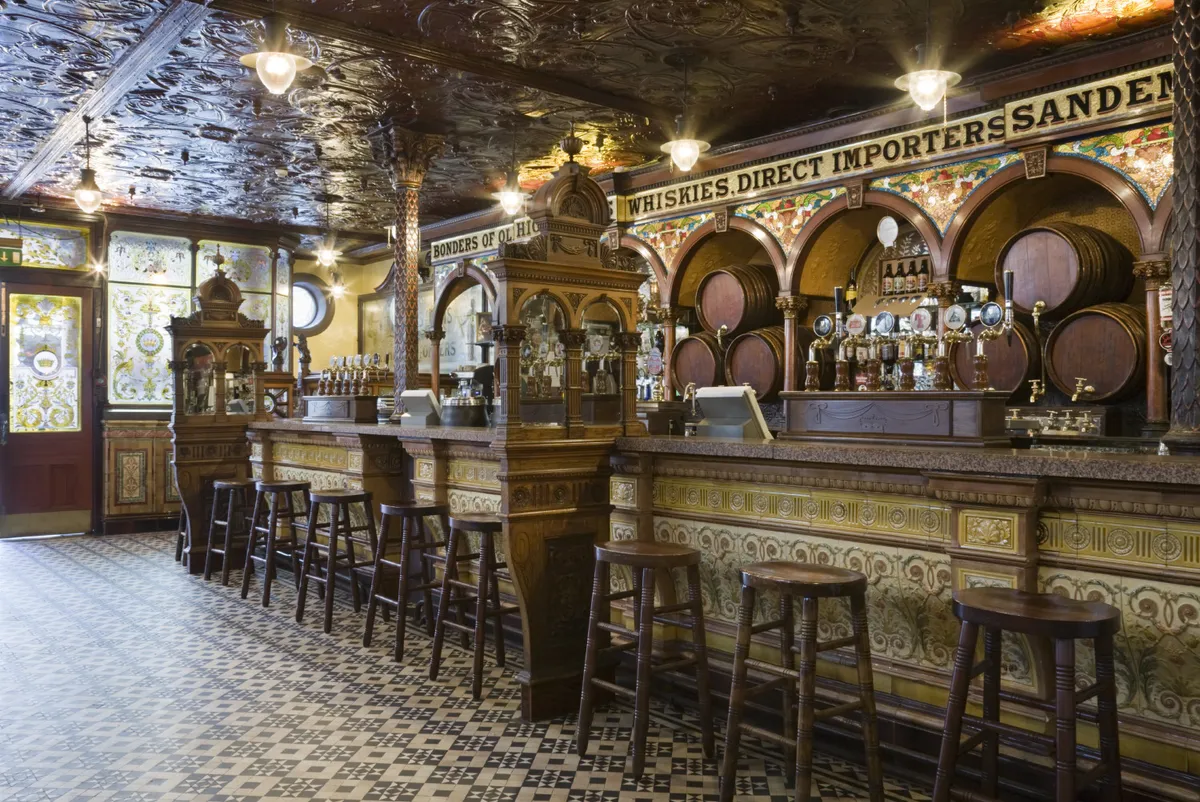
One of Northern Ireland’s most famous pubs, the Crown Bar is a Victorian gem hidden in the streets of Belfast. Its wonderfully atmospheric setting, with period gas lighting and cosy snugs is a perfect restorative after some urban exploration or a roam around the meadows and woodlands of nearby Minnowburn.

